- Marine Environment
- Ocean Exploration
- Marine Resources
- Maritime Trade
- Marine Insurance
- Maritime History
- Maritime Law
- Maritime Organizations
- Maritime Communications
- Maritime Defense
- Maritime Regulations
- Marine Biosecurity
- Maritime Security
- Ports & Harbors
- Ship Recycling
- Cruise Ship Industry


What are the advantages and disadvantages of maritime transport?
Maritime transport, also known as waterborne transportation, refers to the movement of goods or people by sea. It has been a critical mode of transportation for centuries, connecting continents and facilitating global trade. This article will explore the advantages and disadvantages of maritime transport in detail.
Table of Contents
Advantages of Maritime Transport
1. Cost-effective: One of the significant advantages of maritime transport is its cost-effectiveness. Compared to other modes of transportation, such as air or road, shipping goods by sea is generally more affordable. The ability to accommodate large cargo volumes and the lower fuel consumption of ships contribute to lower transportation costs.
2. High carrying capacity: Ships have a much higher carrying capacity compared to other modes of transportation. They can transport a vast amount of goods in a single trip, making it more efficient for bulk shipments. This is particularly beneficial for industries such as mining, agriculture, and manufacturing, which require large-scale transportation of raw materials or finished products.
3. Global connectivity: Maritime transport allows for seamless global connectivity, connecting various ports and enabling international trade. Ships can travel to remote locations, reaching destinations that may not be accessible by other means of transportation. This makes maritime transport crucial for supporting economic growth and development worldwide.
4. Environmentally friendly: Despite being large vessels, ships have a relatively low carbon footprint compared to other modes of transportation. The shipping industry has been actively adopting greener practices, such as using cleaner fuels and implementing energy-efficient technologies, to reduce its environmental impact. This makes maritime transport a more sustainable option in terms of greenhouse gas emissions.
According to the International Maritime Organization (IMO), shipping produces around 2.5% of global greenhouse gas emissions, significantly lower than other forms of transportation.
Disadvantages of Maritime Transport
1. Longer transit times: One of the primary drawbacks of maritime transport is the longer transit times. Ships travel at lower speeds compared to airplanes, which can result in delays for time-sensitive cargo. In certain cases, unforeseen circumstances such as adverse weather conditions can further prolong the delivery time.
2. Vulnerability to piracy and maritime accidents: Maritime transport faces the risk of piracy and maritime accidents, which can lead to significant financial losses and endanger the lives of crew members. Despite efforts by international organizations and naval forces to combat piracy, some areas still remain high-risk zones. Furthermore, accidents such as ship collisions or grounding pose a threat to both human life and the environment.
Piracy Statistics:
3. Limited flexibility: While ships provide an efficient means of transporting large quantities of goods, they are less flexible when it comes to door-to-door delivery. Containers may need to be transferred between different modes of transportation, such as trucks or trains, to reach their final destination. This additional step can add complexity and time to the logistics process.
Why was maritime trade better than land trade?
1. introduction.
Maritime trade has been a fundamental aspect of global commerce throughout history. This article explores the advantages that maritime trade had over land trade, highlighting the reasons why it became the preferred method of transportation.
2. Geographical Accessibility
One of the key advantages of maritime trade is its ability to overcome geographical barriers. Oceans, seas, and rivers provide extensive trade routes, connecting distant regions and allowing for the exchange of goods on a global scale. Land trade, on the other hand, is limited by natural obstacles such as mountains, deserts, and dense forests, making it less feasible for long-distance commerce.
3. Transportation Capacity
Maritime trade offers significantly higher transportation capacity compared to land trade. Ships have the ability to carry large quantities of cargo, including bulky and heavy items, which would be impractical to transport overland. This capacity allows for economies of scale, reducing costs and increasing efficiency in the transportation of goods.
4. Cost-effectiveness
Maritime trade is often more cost-effective than land trade. Due to the larger transportation capacity, the cost per unit of goods shipped by sea tends to be lower compared to land transportation. Additionally, the expense of building and maintaining infrastructure, such as roads and railways, is significantly higher than constructing and maintaining ports and docks.
5. Trade Networks
Maritime trade facilitated the establishment of extensive trade networks across different continents. Ancient civilizations, such as the Phoenicians and the Greeks, relied heavily on maritime trade to connect distant regions and foster cultural exchange. These trade networks not only contributed to economic growth but also facilitated the spread of ideas, technologies, and cultural practices.
6. Access to Resources
Maritime trade provided access to valuable resources that were not available in landslocked regions. Coastal areas had abundant resources such as fish, seaweed, and salt, which were essential for both sustenance and trade. Additionally, maritime trade enabled the exploration and discovery of new lands, leading to the acquisition of rare and exotic products.
7. Historical Significance
Maritime trade played a pivotal role in shaping world history. It led to the rise of powerful empires, as nations with extensive naval capabilities gained dominance in global affairs. The exploration and colonization of new territories by sea opened up opportunities for economic expansion, colonization, and cultural exchange.
8. Environmental Impact
Compared to land trade, maritime trade generally has a lower environmental impact. Ships are a more fuel-efficient mode of transportation than trucks or trains, resulting in reduced carbon emissions per unit of cargo transported. Furthermore, advancements in shipping technology have led to the development of eco-friendly practices, such as the use of cleaner fuels and adoption of sustainable shipping routes.
9. Adaptability
Maritime trade has continued to adapt and evolve with changing times. Today, it remains a vital component of the global economy, supporting international trade and connecting businesses across continents. The emergence of containerization and advancements in logistics have further improved the efficiency and reliability of maritime trade.
10. Conclusion
Maritime trade offers numerous advantages over land trade, including geographical accessibility, greater transportation capacity, cost-effectiveness, expansive trade networks, access to resources, historical significance, lower environmental impact, and adaptability. These factors have contributed to the enduring importance and success of maritime trade throughout history and into the present day.
What are the threats of maritime trade?
Maritime trade plays a crucial role in the global economy, facilitating the transportation of goods and commodities across oceans. However, this industry also faces various threats that can disrupt the flow of trade and pose risks to both the economy and security. Let’s explore some of these threats:
Piracy is a significant threat to maritime trade, particularly in regions such as the Gulf of Aden and the Strait of Malacca. Pirates target cargo ships and hijack them for ransom or theft. This not only leads to financial losses but also endangers the lives of crews.
Terrorist groups may target maritime trade as a means to disrupt economies and cause political instability. Attacks on ports, vessels, or critical infrastructure can have severe consequences both economically and in terms of national security.
Smuggling and Illegal Activities
The vastness of the oceans makes it challenging to monitor and control every vessel, making maritime trade vulnerable to smuggling activities. From drugs and weapons to counterfeit goods, illegal activities pose a threat to trade and can undermine fair competition.
Environmental Disasters
Maritime trade carries the risk of environmental disasters such as oil spills or chemical leaks. Accidents, natural disasters, or deliberate acts can cause significant ecological damage, affecting marine life, coastal communities, and even the tourism industry.
Cybersecurity Threats
As technology advances, so does the risk of cyber threats. The increasing reliance on digital systems for navigation, communication, and cargo management exposes maritime trade to potential cyber attacks. Hackers can target vessels, ports, or shipping companies, disrupting operations and compromising sensitive data.
Illegal Fishing
Unregulated and illegal fishing practices pose a threat to maritime trade by depleting fish stocks and undermining sustainable fishing practices. This not only affects the environment but also impacts the livelihoods of those dependent on the fishing industry.
Preventing the Threats
Combating these threats requires a multi-faceted approach involving international cooperation, regulatory frameworks, technology advancements, and increased security measures.
- Enhancing intelligence sharing among nations and coordinating efforts to combat piracy and terrorism.
- Implementing strict regulations to prevent smuggling and illegal activities.
- Investing in surveillance systems, such as satellite tracking and monitoring technologies, to improve situational awareness and detect potential threats.
- Strengthening cybersecurity measures and promoting awareness among maritime stakeholders about the risks and best practices.
- Enforcing stricter regulations and penalties to curb illegal fishing practices and promoting sustainable fishing methods.
In Conclusion
Maritime trade faces various threats that can have far-reaching consequences for global economies, security, and the environment. Addressing these threats requires a comprehensive approach involving international cooperation, robust regulations, advanced technology, and awareness among all stakeholders. By effectively managing and mitigating these risks, we can ensure the smooth operation of maritime trade and foster economic growth.
What are the Pros and Cons of Sea Trade?
Introduction.
Sea trade has been a crucial part of global commerce for centuries. It enables countries to exchange goods and services across vast distances, fostering economic growth and cultural exchange. However, like any form of trade, sea trade has its advantages and disadvantages. In this article, we will explore the pros and cons of sea trade.
Pros of Sea Trade
- Cost-effective: Sea transportation is generally more cost-effective than air or land transport for bulk and heavy goods.
- Global reach: Ships can access remote areas and connect different continents, opening up markets that would otherwise be inaccessible.
- Large cargo capacity: Ships have significantly larger cargo capacities compared to other modes of transport, allowing for the transportation of large quantities of goods in a single trip.
- Reduced carbon footprint: Sea transport is considered more environmentally friendly than air transport, as ships produce fewer emissions per ton of cargo transported.
Cons of Sea Trade
- Slow transit time: Sea transport is slower compared to air transport, which can be a disadvantage when time-sensitive delivery is required.
- Weather-dependent: Ships are susceptible to weather conditions, and adverse weather can cause delays or disruptions in sea trade.
- Piracy and security risks: Certain regions may have higher piracy risks, posing a threat to both cargo and crew safety.
- Infrastructure limitations: Developing suitable port infrastructure and maintaining navigable waterways require significant investments.
What Cannot be Shipped by Sea?
Shipping by sea is a popular and cost-effective method for transporting goods across the globe. However, there are certain items that cannot be shipped by sea due to safety, legal, or environmental reasons. It is important to be aware of these restrictions to avoid any potential conflicts or complications when shipping your goods.
1. Hazardous Materials
Hazardous materials such as chemicals, flammable substances, explosives, radioactive materials, and toxic substances are strictly prohibited from being shipped by sea. These materials pose a significant risk to the ship, crew, and the environment, making it essential to comply with international regulations.
2. Live Animals
While some live animals can be transported via specially designed containers, there are certain restrictions and regulations in place. Endangered species, pets, and livestock may require special permits, health certificates, and specific conditions to ensure their well-being during the journey.
3. Perishable Goods
Perishable goods, including fresh produce, dairy products, and frozen foods, may not be suitable for long sea voyages. The risk of spoilage and quality deterioration due to temperature fluctuations and extended transit times makes it challenging to transport these items by sea.
4. Firearms and Ammunition
Firearms and ammunition are subject to strict legal restrictions and may not be permitted for shipment by sea. These items typically require licenses, permits, and compliance with international arms control regulations to ensure the safety of the crew, vessel, and other cargo.
5. Illegal Substances
Transporting illegal substances, including drugs and narcotics, is strictly prohibited by law and subject to severe penalties. International authorities closely monitor shipments to prevent the smuggling of illegal substances by sea.
6. Counterfeit Goods
Shipping counterfeit or pirated goods is illegal and can lead to legal consequences, including heavy fines and potential imprisonment. It is crucial to respect intellectual property rights and refrain from shipping counterfeit products by sea.
7. Fragile Items
While delicate and fragile items can be shipped by sea, they require extra care and specialized packaging to ensure their safe journey. Fragile items such as glassware, artwork, and electronics may be susceptible to damage during the rough handling and movements of the ship.
8. Controlled Substances
Controlled substances, including certain medications and chemicals, may require special authorization, permits, or licenses to be shipped by sea. These substances are closely regulated to prevent misuse or harm.
9. Radioactive Materials
Radioactive materials, such as nuclear waste or isotopes used in medical procedures, have strict regulations governing their transportation. Due to the potential risks to human health and the environment, specialized handling, packaging, and documentation are required.
10. Unsecured Cargo
Unsecured cargo that poses a risk to the vessel, crew, or other cargo may not be allowed for shipment. Proper packing, securing, and stowing of goods are essential to ensure their safe transport by sea.
“It is important to familiarize yourself with the specific shipping regulations and restrictions applicable to your goods to avoid any potential issues or delays.”
In conclusion, while shipping by sea is a convenient and cost-effective method for transporting goods, there are certain items that cannot be shipped due to safety, legal, or environmental reasons. It is essential to adhere to these restrictions to ensure compliance with international regulations and to protect the well-being of the ship, crew, cargo, and the environment.
Is it cheaper to ship by air or sea?
When it comes to shipping goods internationally, one of the key considerations is determining whether it is cheaper to ship by air or sea. Both modes of transportation have their own advantages and disadvantages, and understanding these can help businesses make informed decisions about their shipping strategies.
Shipping by Air
Shipping by air is known for its speed and efficiency. It is particularly beneficial for time-sensitive shipments and perishable goods. Air freight charges are typically calculated based on the weight and volume of the shipment, which can make it more expensive compared to sea freight. However, air freight can also offer cost savings in terms of shorter transit times, reduced inventory holding costs, and potential for lower insurance premiums.
Shipping by Sea
Shipping by sea is generally considered a more cost-effective option for large, bulky items or shipments that do not have strict delivery deadlines. Sea freight charges are typically based on the volume of the shipment, making it more suitable for larger consignments. Although sea freight may take longer compared to air freight, it can be significantly cheaper, especially for long-distance shipments.
Factors Affecting Costs
- Distance: The distance between the origin and destination plays a crucial role in determining the overall shipping cost. Generally, the longer the distance, the more cost-effective sea freight becomes.
- Type of goods: Fragile or perishable goods may require faster transportation methods like air freight, which can be more expensive.
- Urgency: If time is of the essence, air freight may be the better option despite the higher costs.
- Customs and handling charges: Customs duties, taxes, and handling fees can significantly impact the overall cost of shipping by both air and sea.
Choosing the Right Mode of Transportation
The choice between air and sea freight ultimately depends on the specific requirements of the shipment. Businesses should consider the nature of their products, time constraints, budget, and other relevant factors when making a decision. It is also important to work closely with shipping providers to obtain accurate quotes and explore cost-saving options.
Quote: “The key to choosing between air and sea freight is finding the right balance between cost and speed.” – Supply Chain Expert
Sea trade offers numerous advantages, such as cost-effectiveness, global reach, and large cargo capacity. However, it also comes with drawbacks, including slow transit times, weather dependency, piracy risks, and infrastructure limitations. Understanding these pros and cons is crucial for businesses and policymakers in optimizing their trade strategies and mitigating potential challenges.
“Sea trade provides a vital link between nations, fostering economic growth and cultural exchange.” – John Doe, Maritime Economist
While air freight offers speed and efficiency, it usually comes at a higher cost than sea freight. Sea freight, on the other hand, offers substantial cost savings but may have longer transit times. When deciding which mode of transportation to choose, businesses should carefully evaluate their shipping needs and consider factors such as distance, type of goods, urgency, and customs charges. By weighing these considerations, businesses can make an informed decision that aligns with their budget and delivery requirements.
Related Posts

Maritime trade law
Maritime Trade Law: Navigating the Seas of Legal Challenges Introduction Maritime trade has been a vital component of global commerce… Read More » Maritime trade law

Maritime trade map
Maritime Trade Map: Navigating the Waters of Global Commerce The maritime trade industry has been an essential cornerstone of global… Read More » Maritime trade map

Maritime trade in medieval india
Maritime Trade in Medieval India Introduction Maritime trade played a significant role in the economic development and cultural exchange in… Read More » Maritime trade in medieval india
Sea Transportation – History, Types, Advantages and Future
Sea transportation has played a vital role in the development of human civilization and global trade for centuries. From ancient times when early seafarers navigated the waters using simple vessels to the modern era of massive cargo ships and luxurious cruise liners, the history of sea transportation is rich and fascinating.
This article explores the history, types, advantages, and future prospects of sea transportation, shedding light on its significance in connecting nations, facilitating trade, and shaping the global economy.
1. Introduction to Sea Transportation
Sea transportation, also known as maritime transportation, refers to the movement of people, goods, and commodities across oceans, seas, and other navigable waterways using ships, boats, and other vessels. It is one of the oldest and most widely used modes of transportation.
Importance in Global Trade
Sea transportation plays a crucial role in global trade, facilitating the movement of goods between countries and continents. Around 90% of international trade is carried out through sea routes, making it an essential component of the global economy. It allows for the transportation of large volumes of cargo, including raw materials, finished products, and energy resources, efficiently and cost-effectively.
2. Historical Overview
Throughout history, humans have utilized various methods to navigate and transport goods across water bodies. These methods included rafts, canoes, and early sailboats. The development of sails and oars allowed for more efficient propulsion, enabling longer journeys and trade between ancient civilizations.
Impact of Exploration and Colonization
The Age of Exploration in the 15th and 16th centuries led to significant advancements in sea transportation. Explorers like Christopher Columbus and Ferdinand Magellan discovered new routes and expanded trade networks, connecting previously isolated parts of the world. The resulting colonization and trade led to the establishment of maritime empires and the growth of seaports.
Shipbuilding and Navigation Techniques
Shipbuilding techniques and navigation methods evolved over time, leading to advancements in sea transportation. The invention of the steam engine in the 18th century revolutionized maritime travel, making it faster and more reliable. The introduction of iron and steel ships in the 19th century further improved durability and capacity. Modern navigation technologies like GPS and radar have enhanced safety and efficiency.
3. Types of Sea Transportation
Merchant navy and cargo shipping.
Merchant navy refers to the commercial fleet of ships engaged in transporting cargo, including bulk commodities, containerized goods, and oil tankers. Cargo shipping plays a vital role in international trade, connecting manufacturers, suppliers, and consumers worldwide.
Passenger Ships and Cruises
Passenger ships cater to people seeking travel and leisure experiences. From ferrying commuters across short distances to luxurious cruise liners offering vacations, passenger ships provide a range of services for both domestic and international travel.
Fishing Vessels and Aquaculture
Fishing vessels serve the fishing industry and are used for capturing fish and other marine resources. Aquaculture, on the other hand, involves cultivating fish and shellfish in controlled environments, contributing to the seafood industry.
Military and Naval Vessels
Military and naval vessels are designed for defense purposes and include warships, submarines, and aircraft carriers. These vessels play a crucial role in maintaining national security and safeguarding maritime trade routes.
4. Advantages
Sea transportation is often more cost-effective and efficient for transporting large volumes of goods over long distances compared to other modes of transportation. Ships have a high cargo capacity and can carry a wide range of goods, reducing the overall transportation costs per unit.
Ability to Carry Large and Heavy Cargo
Ships are capable of carrying oversized and heavy cargo, such as machinery, vehicles, and bulk commodities like coal and grains. This makes sea transportation ideal for industries that require the transportation of large and heavy goods.
Reduced Environmental Impact
Compared to other modes of transportation, such as air or road, sea transportation has a lower carbon footprint. Ships can carry a larger quantity of goods per unit of fuel consumed, resulting in reduced greenhouse gas emissions and environmental impact.
Global Connectivity and Trade Facilitation
Sea transportation provides global connectivity, enabling trade between countries and continents. It facilitates the exchange of goods and services, fostering economic growth and cultural exchange. It also helps develop and maintain international relationships through diplomatic interactions in ports and during joint naval exercises.
In conclusion, sea transportation has a rich history and continues to be a vital part of global trade. Its various types of vessels serve different purposes, from transporting cargo and passengers to supporting the military. With its advantages in cost-effectiveness, cargo capacity, environmental impact, and global connectivity, sea transportation will likely play a significant role in the future of transportation and trade.
5. Challenges and Innovations
When it comes to sea transportation, security, and piracy concerns have always been a part of the narrative. From historical tales of pirates to modern-day incidents, the safety of cargo and crew has been a top priority. However, the industry has evolved to combat these challenges with increased security measures, such as surveillance technology, armed guards, and collaboration between international maritime organizations.
Safety and Accidents Prevention
Safety is of paramount importance in sea transportation. Accidents at sea can have devastating consequences, not just for the people involved, but also for the environment. To prevent accidents, the industry has implemented strict safety regulations, including regular inspections, advanced navigation systems, and comprehensive training programs for crew members. Continuous efforts are made to enhance safety practices and improve emergency response strategies.
Technological Advancements in Navigation and Communication
Technology has played a pivotal role in transforming sea transportation. Navigation and communication systems have become more advanced, making it easier to navigate through challenging waters and unpredictable weather conditions.
Real-time monitoring, satellite communication, and improved radar systems have contributed to safer and more efficient journeys. These technological advancements have revolutionized the way ships navigate and communicate, reducing the risks associated with sea transportation.
Sustainable and Green Shipping Initiatives
With growing concerns about environmental impact, the sea transportation industry has been actively seeking sustainable and green solutions. Initiatives such as using cleaner fuels, reducing emissions, and implementing eco-friendly practices have gained traction. Companies are investing in research and development to explore alternative energy sources, like wind and solar power. These sustainable initiatives aim to minimize the industry’s carbon footprint and preserve the health of our oceans.
6. The Future of Sea Transportation
Emerging technologies and automation.
The future of sea transportation holds exciting possibilities with emerging technologies and automation. Autonomous vessels are being developed, promising increased efficiency and reduced human error. Unmanned underwater vehicles could revolutionize underwater exploration and maintenance. Additionally, advanced data analytics and artificial intelligence are expected to optimize shipping routes, improve fuel efficiency, and enhance logistics.
Alternative Fuels and Energy Sources
As the world seeks to transition to cleaner energy, sea transportation is exploring alternative fuels and energy sources. Biofuels, hydrogen, and even electric propulsion systems are being considered to reduce reliance on traditional fossil fuels. These innovations not only offer environmental benefits but also potential cost savings in the long run.
Impact of Climate Change
Climate change is a pressing global issue that also affects sea transportation. Rising sea levels, changing weather patterns, and increased extreme weather events pose challenges to navigational safety. The industry must adapt to these changes by implementing resilient infrastructure, enhancing emergency response capabilities, and collaborating with scientists and policymakers to mitigate the impact of climate change.
Hyperloop and Submerged Floating Tunnels
Looking ahead, futuristic possibilities like the Hyperloop and submerged floating tunnels could revolutionize sea transportation. The Hyperloop envisions high-speed transportation in low-pressure tubes, potentially connecting land and sea through innovative infrastructure.
Submerged floating tunnels could provide efficient and sustainable alternatives to traditional bridges, connecting islands and coastal regions. Although these ideas are still in the experimental phase, they demonstrate the industry’s willingness to explore groundbreaking solutions.
7. A Bright Future
Sea transportation has come a long way, overcoming various challenges and embracing innovations. Security concerns, safety measures, technological advancements, and sustainability initiatives have shaped the industry. With emerging technologies, alternative fuels, and a determination to combat climate change, the future of sea transportation looks promising. As we navigate the waters of progress, it is crucial to prioritize safety, environmental stewardship, and adaptability for a sustainable and efficient maritime future.
Sea transportation continues to be a cornerstone of global trade and economic development. Throughout history, it has evolved from humble beginnings to a sophisticated industry, constantly adapting to meet the demands of a changing world.
With advancements in technology, safety measures, and sustainable practices, the future of sea transportation holds immense potential. As we navigate the challenges and embrace new opportunities, sea transportation remains a critical component in fostering international connectivity, facilitating commerce, and shaping the world we live in.
Photo by Aashish Pareek on Unsplash
Share this:
The owner of MagniPak has over 35 years of rich higher management exposure in Banking and Textile Exports.
Similar Posts

Foreign Trading – How to Start an International Business
Welcome to the world of foreign trading, where borders are no longer barriers and opportunities for global expansion abound. In…

Bank Finance for Exports – The Reliable Source for Working Capital
Exporting goods and services can open up new and lucrative opportunities for businesses, but it often requires substantial financial resources….

Export Documents – The Link Between Exporters and Importers
Exporting goods to international markets involves a complex process that requires careful attention to detail and adherence to various legal…

Dangerous Cargo – Regulations and Safety Measures
In today’s globalized world, the transportation of dangerous cargo has become an integral part of domestic and international trade. However,…

Documentary Credits – The Tools for Trading Across the Borders
Documentary credits, also known as letters of credit, play a fundamental role in international trade, providing a secure means of…

Courier Companies – How They Impact International Trade
International trade plays a crucial role in the global economy, facilitating the exchange of goods and services across borders. In…
An official website of the United States government Here's how you know
Official websites use .gov A .gov website belongs to an official government organization in the United States.
Secure .gov websites use HTTPS A lock ( Lock A locked padlock ) or https:// means you’ve safely connected to the .gov website. Share sensitive information only on official, secure websites.
Glossary of Maritime Terms
- More from M-W
- To save this word, you'll need to log in. Log In
Definition of maritime
Did you know.
The maritime countries of Portugal and England produced many seafaring explorers during the 16th and 17th centuries, many of whom sailed under the flags of other countries. Sailing for the Spanish, Ferdinand Magellan captained the ship that was the first to circle the world, charting many new maritime routes as it went. Henry Hudson, funded by the Dutch, sailed up what we call today the Hudson River, claiming the maritime area that now includes New York City for the Netherlands.
- navigational
Examples of maritime in a Sentence
These examples are programmatically compiled from various online sources to illustrate current usage of the word 'maritime.' Any opinions expressed in the examples do not represent those of Merriam-Webster or its editors. Send us feedback about these examples.
Word History
Latin maritimus , from mare
circa 1550, in the meaning defined at sense 1
Articles Related to maritime
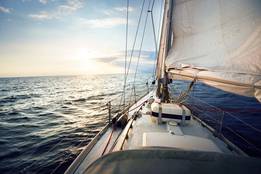
What's the difference between a 'boat'...
What's the difference between a 'boat' and a 'ship'?
And which one holds the gravy?
Dictionary Entries Near maritime
Maritime Alps
Cite this Entry
“Maritime.” Merriam-Webster.com Dictionary , Merriam-Webster, https://www.merriam-webster.com/dictionary/maritime. Accessed 19 Sep. 2024.
Kids Definition
Kids definition of maritime, legal definition, legal definition of maritime, more from merriam-webster on maritime.
Nglish: Translation of maritime for Spanish Speakers
Britannica English: Translation of maritime for Arabic Speakers
Subscribe to America's largest dictionary and get thousands more definitions and advanced search—ad free!

Can you solve 4 words at once?
Word of the day, approbation.
See Definitions and Examples »
Get Word of the Day daily email!
Popular in Grammar & Usage
Plural and possessive names: a guide, 31 useful rhetorical devices, more commonly misspelled words, absent letters that are heard anyway, how to use accents and diacritical marks, popular in wordplay, 8 words for lesser-known musical instruments, it's a scorcher words for the summer heat, 7 shakespearean insults to make life more interesting, 10 words from taylor swift songs (merriam's version), 9 superb owl words, games & quizzes.


Marine Travel in a Sustainable Way
What does one like to do when one finds themselves in an area within close proximity to a nice body of sweet or salt water? Visit it, of course! When taking a trip, it is only natural to find oneself wanting to visit the local coastal towns, take a sail or to go for a diving tour to explore the local marine life through marine travel.
What is marine tourism?
Marine tourism is the act of engaging in tourism activities partaken in large bodies of water such as fresh water lakes and oceans. Activities such as diving or snorkeling, visiting coral reefs in a sustainable way, sailing in a wind powered sail boat, or watching the wildlife from a quiet electric boat or even from shore are all marine travel activities which can be done in a sustainable way.
These refreshing activities are not only beneficial to the traveller and local tour companies, but also can be beneficial to the marine wildlife as well, as there do exist sustainable options for regenerative marine tourism – such as helping to transplant corals – for a 100% guilt free marine experience.
Examples of sustainable marine travel Boat tours for viewing wildlife
This may sound as if it is something already quite common by tourism standards. However, the difference is in the focus. For example, in Finland, when viewing the endangered Saimaa ringed seals , only electric boats are used in order to eliminate noise which may disturb the seals and the viewing is done from a safe distance in which to not alert the seals to the existence of others. Or, for another example, when whale watching in Alaska a similar approach to distance is used by both watching from sea or watching from land.
Shark tours
Sustainable shark tours are a form of dive tourism in which the tour is conducted in a hands-off way which works to protect the sharks in areas designated as protected. When taking a sustainable shark tour during marine travel, one can be confident that their monies spent on the tour will also be directed into the preservation of the sharks or their protected areas.
Transplanting Corals
Helping to save the coral reefs is an important aspect of preserving marine life. Initiatives such as ecotours designed to not only enjoy a nice day of diving but to also work for the regeneration of oceans by transplanting corals are a guilt-free form of marine tourism.
Whenever diving, please do consider the use of reef-safe sunscreen in order to avoid causing any additional damage to the reefs. And, as always, please be minimise litter by disposing of rubbish in the proper receptacle or by using reusable products which do not require disposal.
Sustainable marine travel works to help more than the marine wildlife. Small communities in coastal regions around the world rely on income from tourism, be it directly or indirectly. When enlisting the services of a local tour or diving guide, having lunch at a small local dining establishment or purchasing handicraft souvenirs from local makers, those profits go right back into the community where it is needed.
It is always recommended to research the sustainable / ecotours before travelling to ensure that all tour companies or activities are eco-certified. More information about eco certification can be found by clicking here .
Enjoying a day on, or in the water is a non-negotiable for many travellers. Sustainable marine travel is a guilt-free way to experience local marine wildlife or even to engage in regenerative efforts while on one’s travels.
Do you enjoy learning about marine travel and sustainable tourism options? Would you like to know more? To receive inspiration direct to your email inbox, please click here to register for our Ecotourism-World newsletter!

You May Also Like

Healing Waters with Natural Hot Springs!

Sustainable Outdoor Winter Activities

Ecotourism Suffers From Covid-19 Restrictions: Here’s How We Can Help From Home!
Marine Navigation: Nautical Terms explained in simple terms
- Categories : Life at sea
- Tags : Marine engineering
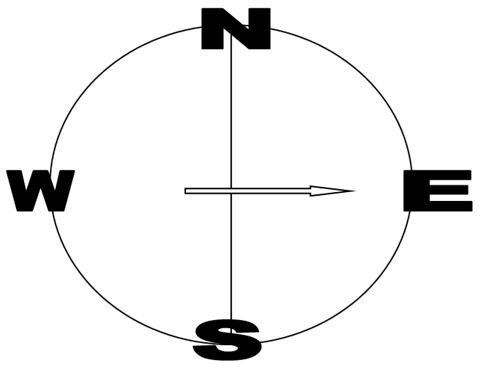
Basic Directions
The diameter around which the earth rotates is “The Axis of Rotation”. Where it meets the earth form the Geographic North and South Poles
The direction in which any point on the earth’s surface is carried (because of the earth’s anticlockwise rotation) is called East . The opposite direction is West .
Terms related with the ship
ABEAM - At right angles to the navigating bridge of a ship.
AFT - Toward the stern of the ship
ABAFT - Between abeam and astern.
AHEAD - In a forward direction, ie in the direction of the bow (front) of the ship
ASTERN - In back ( stern) of the ship, opposite of ahead.
PORT: The left of the ship, facing the bow OR, a harbour.
STARBOARD: The right side of the ship, facing the bow.
Basic Nautical terms used when sailing
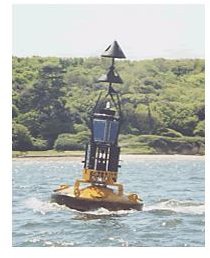
AGROUND - Touching or stuck to the bottom of the seabed.
AIDS TO NAVIGATION Artificial objects to supplement natural landmarks used for navigation. eg buoys, lighthouses etc. (see pic)
ANCHORAGE A place suitable for anchoring in relation to the wind, seas and the sea bottom.
BEARING - The direction of an object relative to the heading of the ship. Measured in degrees.
BUOY - An anchored float used for marking a position on the water, or for mooring. (see pic)
DRAFT - The depth of water a ship draws.
FATHOM - Six feet.
GIVE-WAY VESSEL A term used to describe the vessel which must yield in meeting, crossing, or overtaking situations.
STAND ON VESSEL A term used to describe the vessel which may NOT yield in meeting, crossing, or overtaking situations.
TIDE - The periodic rise and fall of water level in the oceans. See https://www.brighthubengineering.com/seafaring/25990-tides-how-they-occur-and-how-they-affect-navigation-at-sea/
Chartwork and miscellaneous terms
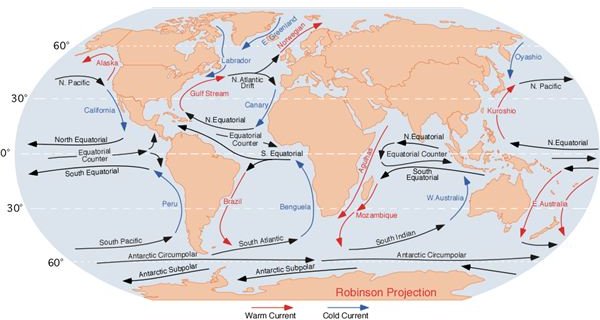
See also https://www.brighthubengineering.com/seafaring/23602-a-brief-guide-to-marine-navigational-charts/
A COMPASS ROSE (see pic) is a easy means- for a navigator- of finding direction on the chart and also plotting a ship’s course, besides taking bearings (angles) of objects with a compass. Called because it looks like a rose petal opened up, it is graded from 0 degrees to 360 degrees, with 0 being North, 90 being E, 180 being S and 270 being W.
SOUNDING A measurement of the depth of water.
HEADING (HDG): The direction in which the ship is pointing in any instant.
SPEED(S): The speed of the ship through the water. Always recorded in knots (a sea mile is a knot, and is 6080 feet)
Water in motion is called CURRENT. (see pic)
SET: The direction in which the current is flowing.
DRIFT: The speed (in knots) of the current.
COURSE: The direction in which a vessel is steered or is intended to be steered (direction through the water).
FIX The ship’s position, plotted on the chart by celestial or land bearings to a known point. (see pic)
COURSE is the intended horizontal direction of travel measured from 000 degrees clockwise through 360 degrees, where 000 is North.
The Purpose of the COLREGS (Collision Regulations at sea) is to cover, by international convention, anti collision rules any ships belonging to any nationality will follow at sea. Also called ROR or Rules of the Road.
Currents diagram from https://www.geni.org/
Marine tourism
- Reference work entry
- First Online: 01 January 2016
- Cite this reference work entry

- Mark Orams 3 &
- Michael Lueck 4
180 Accesses
8 Citations
The sea has always been an important venue for recreation. However, its use for tourism has mirrored the global growth of mass tourism during the latter half of the twentieth century and on into the twenty-first century. According to Orams ( 1999 : 9), marine tourism includes those recreational activities which involve travel away from one’s place of residence and which have as their host or focus the marine environment (waters that are saline and tide affected). Thus, marine tourism includes the many activities that occur on, in, and under the sea, as well as those which are coast based but where the primary attraction is sea based.
Clear trends in marine tourism are the growth in diversity of activities, increasing geographical spread, and growing popularity. These trends are strongly influenced by technological advances. Inventions and the availability of mechanisms for accessing the sea for recreation have grown massively in the past half century. Important examples include the...
This is a preview of subscription content, log in via an institution to check access.
Access this chapter
Subscribe and save.
- Get 10 units per month
- Download Article/Chapter or eBook
- 1 Unit = 1 Article or 1 Chapter
- Cancel anytime
- Available as PDF
- Read on any device
- Instant download
- Own it forever
- Available as EPUB and PDF
- Durable hardcover edition
- Dispatched in 3 to 5 business days
- Free shipping worldwide - see info
Tax calculation will be finalised at checkout
Purchases are for personal use only
Institutional subscriptions
Lück, M. (ed.) 2008 The Encyclopedia of Tourism and Recreation in Marine Environments. Wallingford: CABI.
Google Scholar
Orams, M. 1999 Marine Tourism: Development, Impacts and Management. London: Routledge.
Book Google Scholar
Orams, M., and M. Lück 2013 Marine Systems and Tourism. In A Handbook of Tourism and the Natural Environment, A. Holden and D. Fennell, eds., pp.70-182. London: Routledge.
Download references
Author information
Authors and affiliations.
School of Sport and Recreation, Auckland University of Technology, 90 Akoranga Drive, Northcote, Auckland, 0627, New Zealand
School of Hospitality and Tourism, Auckland University of Technology, 55 Wellesley St E, 1010, Auckland, New Zealand
Michael Lueck
You can also search for this author in PubMed Google Scholar

Corresponding author
Correspondence to Mark Orams .
Editor information
Editors and affiliations.
University of Wisconsin-Stout, Menomonie, USA
Jafar Jafari
The Hong Kong Polytechnic University, Hong Kong, China
Honggen Xiao
Rights and permissions
Reprints and permissions
Copyright information
© 2016 Springer International Publishing Switzerland
About this entry
Cite this entry.
Orams, M., Lueck, M. (2016). Marine tourism. In: Jafari, J., Xiao, H. (eds) Encyclopedia of Tourism. Springer, Cham. https://doi.org/10.1007/978-3-319-01384-8_414
Download citation
DOI : https://doi.org/10.1007/978-3-319-01384-8_414
Published : 25 June 2016
Publisher Name : Springer, Cham
Print ISBN : 978-3-319-01383-1
Online ISBN : 978-3-319-01384-8
eBook Packages : Business and Management Reference Module Humanities and Social Sciences Reference Module Business, Economics and Social Sciences
Share this entry
Anyone you share the following link with will be able to read this content:
Sorry, a shareable link is not currently available for this article.
Provided by the Springer Nature SharedIt content-sharing initiative
- Publish with us
Policies and ethics
- Find a journal
- Track your research

- AAPA Events
- Technical & Policy Committees
- Professional Port Manager (PPM)
- Industry Services Directory
- Seaports of the Americas Directory
- Member Ports Map & Multimedia
- Member Press Releases
- Seaports Advisory Newsletter
- Seaports Magazine
- Port Industry Recognition Programs
- Career Center
- PPM Program
- Training Programs
- Resources by Topic
- Resources by Port Operation
- Waterside Infrastructure
- Landside Infrastructure
- Environment & Energy
- AAPA Press Releases
- Alert Newsletter
- Exports, Jobs & Economic Growth
- U.S. Policy Position Papers
- AAPA Membership
- En Español

- Port Community
- Ports & World Trade
- Career Development
- Key & Current Issues
- Ports’ Value to the U.S. Economy
Glossary of Maritime Terms
ABS: The American Bureau of Shipping is a U.S. classification society that certifies if a ship is in compliance with standard rules of construction and maintenance.
anchorage: Port charge relating to a vessel moored at approved anchorage site in a harbor.
apron: The area immediately in front of or behind a wharf shed on which cargo is lifted. On the "front apron," cargo is unloaded from or loaded onto a ship. Behind the shed, cargo moves over the "rear apron" into and out of railroad cars.
Backhaul: To haul a shipment back over part of a route which it has already traveled; a marine transportation carrier’s return movement of cargo, usually opposite from the direction of its primary cargo distribution.
barge: A large, flat-bottomed boat used to carry cargo from a port to shallow-draft waterways. Barges have no locomotion and are pushed by towboats. A single, standard barge can hold 1,500 tons of cargo or as much as either 15 railroad cars or 60 trucks can carry. A barge is 200 feet long, 35 feet wide and has a draft of 9 feet. Barges carry dry bulk (grain, coal, lumber, gravel, etc.) and liquid bulk (petroleum, vegetable oils, molasses, etc.).
berth: (verb) To bring a ship to a berth. (noun) The wharf space at which a ship docks. A wharf may have two or three berths, depending on the length of incoming ships.
bill of lading: A contract between a shipper and carrier listing the terms for moving freight between specified points.
Board of Commissioners: The members of the governing board of a port authority are called commissioners. Members of a Board of Commissioners can be elected or appointed and usually serve for several years.
bollard: A line-securing device on a wharf around which mooring and berthing lines are fastened.
bonded warehouse: A building designated by U.S. Customs authorities for storage of goods without payment of duties to Customs until goods are removed.
Box: Slang term for a container.
breakbulk cargo: Non-containerized general cargo stored in boxes, bales, pallets or other units to be loaded onto or discharged from ships or other forms of transportation. (See also: bulk and container .) Examples include iron, steel, machinery, linerboard and woodpulp.
bulk cargo: Loose cargo (dry or liquid) that is loaded (shoveled, scooped, forked, mechanically conveyed or pumped) in volume directly into a ship’s hold; e.g., grain, coal and oil.
bulkhead : A structure used to protect against shifting cargo and/or to separate the load.
Buoys: Floats that warn of hazards such as rocks or shallow ground, to help ships maneuver through unfamiliar harbors.
cabotage: Shipment of cargo between a nation’s ports is also called coastwise trade. The U.S. and some other countries require such trade to be carried on domestic ships only.
capacity: The available space for, or ability to handle, freight.
captive cargo port: When most of a port’s inbound cargoes are being shipped short distances and most of its export products come from nearby areas, the port is called a captive cargo port. (Contrast with a transit port .)
cargo: The freight (goods, products) carried by a ship, barge, train, truck or plane.
Carrier: An individual, partnership or corporation engaged in the business of transporting goods or passengers (See also: ocean carrier. )
cartage: Originally the process of transporting by cart. Today, the term is used for trucking or trucking fees.
chandlers: Like a hotel at sea, a ship needs many supplies to operate and serve its crew-- groceries; paper products; engine parts; electronics; hardware; etc. A chandler sells these supplies to the ship’s agent. Originally, chandlers (candle makers) provided illumination to ships. Over time they expanded the variety of products they could provide to ships.
channels of distribution: The routes by which products are transported from origin to destination. This includes the physical routes, as well as the different companies involved in ultimately delivering the goods to buyers.
checkers: See clerks .
chock: A piece of wood or other material put next to cargo to prevent it from shifting.
civil service: Some U.S., state, city and parish government jobs are protected under civil service systems which are designed to provide a degree of security to employees and to deter nepotism, political patronage and arbitrary treatment of workers.
clerks: When cargo is unloaded from a ship, a clerk checks the actual count of the goods (number of boxes, drums, bundles, pipes, etc.) versus the amount listed on the ship’s manifest. He will note shortages, overages or damage. This is used to make claims if needed.
common carrier: Trucking, railroad or barge lines that are licensed to transport goods or people nationwide are called common carriers.
Conference rate: Rates arrived at by conference of carriers applicable to water transportation.
consignment: A shipment of goods. The buyer of this shipment is called the consignee; the seller of the goods is called the consignor.
Consolidated Freight Station or Container Freight Station (CFS) - Location on terminal grounds where stuffing and stripping of containers is conducted.
consolidator: The person or firm that consolidates (combines) cargo from a number of shippers into a container that will deliver the goods to several buyers.
container: A box made of aluminum, steel or fiberglass used to transport cargo by ship, rail, truck or barge. Common dimensions are 20' x 8’ x 8' (called a TEU or twenty-foot equivalent unit) or 40' x 8' x 8', called an FEU. Variations are collapsible containers, tank containers (for liquids) and "rag tops" (open-topped containers covered by a tarpaulin for cargo that sticks above the top of a closed box). In the container industry, containers are usually simply called boxes.
container freight station: The facility for stuffing and stripping a container of its cargo, especially for movement by railroad.
container chassis: A piece of equipment specifically designed for the movement of containers by highway to and from container terminals.
container crane: Usually, a rail-mounted gantry crane located on a wharf for the purpose of loading and unloading containers on vessels.
container terminal : A specialized facility where ocean container vessels dock to discharge and load containers, equipped with cranes with a safe lifting capacity of 35-40 tons, with booms having an outreach of up to 120 feet in order to reach the outside cells of vessels. Most such cranes operate on rail tracks and have articulating rail trucks on each of their four legs, enabling them to traverse along the terminal and work various bays on the vessel and for more than one crane to work a single vessel simultaneously. Most terminals have direct rail access and container storage areas, and are served by highway carriers.
containerization: The technique of using a container to store, protect and handle cargo while it is in transit. This shipping method has both greatly expedited the speed at which cargo is moved from origin to destination and lowered shipping costs.
Container on Flat Car (COFC) - A container placed directly on a railroad flatcar without chassis.
contraband: Goods prohibited in trade (such as weapons going to Iran, anything to Cuba). Smuggled goods.
Corps of Engineers: This department of the U. S. Army is responsible for flood protection and providing safe navigation channels. The Corps builds and maintains the levees, flood walls and spillways that keep major rivers out of low lying communities. The Corps is vital to keeping navigation channels open by dredging sand, silt and gravel that accumulate on river and harbor bottoms.
craft: A boat, ship or airplane.
customs: A duty or tax on imported goods. These fees are a major bonus to the economy. In 1999, for example, the U. S. Customs Department collected over $22 billion in fees nationally, which went into the U.S. Treasury. The Customs Department also works to prevent the importation of illegal drugs and contraband.
customs broker: This person prepares the needed documentation for importing goods (just as a freight forwarder does for exports). The broker is licensed by the Treasury Department to clear goods through U.S. Customs. Performs duties related to documentation, cargo clearance, coordination of inland and ocean transportation, dockside inspection of cargo, etc. (Also known as a customhouse broker.)
Dead Weight Tonnage (DWT) : Maximum weight of a vessel including the vessel, cargo and ballast.
deadhead: When a truck returning from a delivery has no return freight on the back haul, it is said to be in deadhead.
deck barge : Transports heavy or oversize cargoes mounted to its top deck instead of inside a hold. Machinery, appliances, project cargoes and even recreational vehicles move on deck barges.
demurrage: A penalty fee assessed when cargo isn’t moved off a wharf before the free time allowance ends.
dock: (verb) - To bring in a vessel to tie up at a wharf berth. (One parks a car, but docks a ship.) (noun) - A dock is a structure built along, or at an angle from, a navigable waterway so that vessels may lie alongside to receive or discharge cargo. Sometimes, the whole wharf is informally called a dock.
dockage: A charge by a port authority for the length of water frontage used by a vessel tied up at a wharf.
draft: The depth of a loaded vessel in the water taken from the level of the waterline to the lowest point of the hull of the vessel; depth of water, or distance between the bottom of the ship and waterline.
drayage: Transport by truck for short distances; e.g. from wharf to warehouse..
dredge: (noun) A waterborne machine that removes unwanted silt accumulations from the bottom of a waterway. (verb) The process of removing sediment from harbor or river bottoms for safety purposes and to allow for deeper vessels.
dry bulk: Minerals or grains stored in loose piles moving without mark or count.
Examples are potash, industrial sands, wheat, soybeans and peanuts.
dunnage: Wood or other material used in stowing ship cargo to prevent its movement.
duty: A government tax on imported merchandise.
Electronic Data Interchange (EDI): The exchange of information through an electronic format. Electronic commerce has been under intensive development in the transportation industry to achieve a competitive advantage in international markets.
elevator: A complex including storage facilities, computerized loading; inspection rooms and docks to load and unload dry bulk cargo such as grain or green coffee.
export packers : Firms that securely pack export products into a container to crate to protect the cargo from damage during an ocean voyage.
feeder service: Ocean transport system involving use of centralized ports to assemble and disseminate cargo to and from ports within a geographic area. Commodities are transported between major ports, then transferred to feeder vessels for further transport to a number of additional ports.
fender piles: The wooden or plastic pilings on the outer edge of the wharf function like the fenders on a car. They are there to absorb the shock of a ship as it docks at the wharf and to protect the structural pilings that actually support the wharf. Fender piles are also called sacrifice piles since they are designed to be discarded after they are broken.
fleeting: The area at which barges, towboats and tugs are berthed until needed. The operation of building or dismantling barge tows.
Foreign Trade Zone (FTZ) - Known in some countries as a free zone, a foreign trade zone (FTZ) is a site within the USA (in or near a U.S. Customs port of entry) where foreign and domestic goods are held until they ready to be released into international commerce. If the final product is imported into the U.S., duties and taxes are not due until the goods are release into the U.S. market. Merchandise may enter a FTZ without a formal Customs entry or the payment of Customs duties or government excise taxes. In the zone, goods may be: stored; tested; sampled; repackaged or relabeled; cleaned; combined with other products; repaired or assembled, etc.
freight: Merchandise hauled by transportation lines.
freight forwarder: An individual or company that prepares the documentation and coordinates the movement and storage of export cargoes. See also Customs house broker.
gantry crane: Track-mounted, shoreside crane utilized in the loading and unloading of breakbulk cargo, containers and heavy lift cargo.
general cargo: Consists of both containerized and breakbulk goods, in contrast to bulk cargo. See: breakbulk, container, bulk, dry bulk). General cargo operations produce more jobs than bulk handling.
Grain elevator: Facility at which bulk grain is unloaded, weighed, cleaned, blended and exported.
gross tonnage: The sum of container, breakbulk and bulk tonnage.
harbor : A port of haven where ships may anchor.
heavy hauler: A truck equipped to transport unusually heavy cargoes (steel slabs, bulldozers, transformers, boats, heavy machinery, etc.)
heavy lift : Very heavy cargoes that require specialized equipment to move the products to and from ship/truck/rail/barge and terminals. This "heavy lift" machinery may be installed aboard a ship designed just for such transport. Shore cranes, floating cranes and lift trucks may also adapted for such heavy lifts.
Home port : Port from which a cruise ship loads passengers and begins its itinerary, and to which it returns to disembark passengers upon conclusion of voyage. Sometimes referred to as "embarkation port" and "turn around port."
hopper car: A freight car used for handling dry bulks, with an openable top and one or more openings on the bottom through which the cargo is dumped.
Hostler (or hustler): A tractor, usually unlicensed, for moving containers within a yard. An employees who drives a tractor for the purpose of moving cargo within a container yard.
interchange: Point of entry/exit for trucks delivering and picking up containerized cargo. Point where pickups and deposits of containers in storage area or yard are assigned.
I.L.A. - International Longshoremen’s Association, which operates on the East and Gulf Coasts. See labor unions and longshoremen .
I.L.W.U. - International Longshore and Warehouse Union, which operates on the West Coast. See labor unions and longshoremen .
intermodal shipment: When more than one mode of transportation is used to ship cargo from origin to destination, it is called intermodal transportation. For example, boxes of hot sauce from Louisiana are stuffed into metal boxes called containers at the factory. That container is put onto a truck chassis (or a railroad flat car) and moved to a port. There the container is lifted off the vehicle and lifted onto a ship. At the receiving port, the process is reversed. Intermodal transportation uses few laborers and speeds up the delivery time.
IMX: This is transportation shorthand for intermodal exchange. In an IMX yard, containers can be lifted from truck chassis to rail intermodal cars or vice versa.
ISO : International Organization for Standardization. Worldwide organization formed to promote development of standards to facilitate the international carriage and exchange of goods and services. Governs construction specifications for ISO containers.
JIT : The abbreviation for "just in time," which is a way to minimize warehousing costs by having cargo shipped to arrive just in time for its use. This inventory control method depends on extremely reliable transportation.
labor union: An organization of workers formed to serve members’ collective interests with regard to wages and working conditions. The maritime unions within ports can include locals of the larger union, such as the General Longshore Workers; Clerks and Checkers; Sack-sewers, Sweepers, Water boys and Coopers; Dock Loaders and Unloaders of Freight Cars and Barges; Dray Clerks, Weighers and Samplers; plus the Seafarer’s International Union; the National Maritime Union; the Marine Engineers’ Beneficial Association and the Teamsters. Some laborers don’t belong to a union.
landlord port: At a landlord port, the port authority builds the wharves, which it then rents or leases to a terminal operator (usually a stevedoring company). The operator invests in cargo-handling equipment (forklifts, cranes, etc), hires longshore laborers to operate such lift machinery and negotiates contracts with ocean carriers (steamship services) to handle the unloading and loading of ship cargoes. (See also : operating port .)
LASH: These 900-foot-long ships carry small barges inside the vessel. LASH stands for Lighter Aboard Ship. Just as cargo is transported by barge from the shallower parts of the Mississippi River to the Port of New Orleans for export aboard ocean-going ships, LASH barges are lifted into these unusual ships. Overseas, the ship can discharge clusters of barges in the open waters. Then several towboats will assemble the barges into tows bound for various ports and inland waterways, without the ship having to spend time traveling to each port.
launch service: Companies that offer "water-taxi" service to ships at anchor.
LCL: The acronym for "less than container load." It refers to a partial container load that is usually consolidated with other goods to fill a container.
Length Overall (LOA) : Linear measurement of a vessel from bow to stern.
Lift On-Lift Off (LO/LO): Cargo handling technique involving transfer of commodities to and from the ship using shoreside cranes or ship's gear.
LTL: Means a shipment that is "less than truckload". Cargoes from different sources are usually consolidated to save costs.
long ton : A long ton equals 2240 pounds.
longshoremen: Dock workers who load and unload ships, or perform administrative tasks associated with the loading or unloading of cargo. They may or may not be members of labor unions. Longshore gangs are hired by stevedoring firms to work the ships. Longshoremen are also called stevedores.
manifest: The ship captain’s list of individual goods that make up the ship’s cargo.
marine surveyor: Person who inspects a ship hull or its cargo for damage or quality.
master: The officer in charge of the ship. "Captain" is a courtesy title often given to a master.
maritime: (adjective) Located on or near the sea. Commerce or navigation by sea. The maritime industry includes people working for transportation (ship, rail, truck and towboat/barge) companies, freight forwarders and customs brokers; stevedoring companies; labor unions; chandlers; warehouses; ship building and repair firms; importers/exporters; pilot associations, etc.
marshaling yard: This is a container parking lot, or any open area where containers are stored in a precise order according to the ship loading plan. Containers terminals may use a grounded or wheeled layout. If the cargo box is placed directly on the ground, it is called a grounded operation. If the box is on a chassis/trailer, it is a wheeled operation.
mean low water (MLW) : Lowest average level water reaches on an outgoing tide.
mean high water (MHW): Highest average level water reaches on an outgoing tide.
mooring dolphin: A cluster of pilings to which a boat or barge ties up.
motor ship (MS) or motor vessel (MV) : A ship propelled by internal-combustion engines.
NVOCC : A non-vessel-owning common carrier that buys space aboard a ship to get a lower volume rate. An NVOCC then sells that space to various small shippers, consolidates their freight, issues bills of lading and books space aboard a ship.
neo-bulk cargo: Uniformly packaged goods, such as wood pulp bales, which stow as solidly as bulk, but are handled as general cargoes.
ocean carrier: Diesel-fueled vessels have replaced the old steamships of the past, although many people still refer to modern diesel ships as steamships. Likewise, the person who represents the ship in port is still often called a steamship agent. ( See: steamship agent)
on-dock rail : Direct shipside rail service. Includes the ability to load and unload containers/breakbulk directly from rail car to vessel.
on-terminal rail: Rail service and trackage provided by a railroad within a designated terminal area.
operating port: At an operational port like Charleston, South Carolina, the port authority builds the wharves, owns the cranes and cargo-handling equipment and hires the labor to move cargo in the sheds and yards. A stevedore hires longshore labor to lift cargo between the ship and the dock, where the port’s laborers pick it up and bring it to the storage site. (See landlord port. )
pallet: A short wooden, metal or plastic platform on which package cargo is placed, then handled by a forklift truck.
Pier: A structure which just out into a waterway from the shore, for mooring vessels and cargo handling. Sometimes called a finger pier.
Piggyback : A rail transport mode where a loaded truck trailer is shipped on a rail flatcar.
pilot: A licensed navigational guide with thorough knowledge of a particular section of a waterway whose occupation is to steep ships along a coast or into and out of a harbor. Local pilots board the ship to advise the captain and navigator of local navigation conditions (difficult currents; hidden wrecks, etc.).
port: This term is used both for the harbor area where ships are docked and for the agency (port authority), which administers use of public wharves and port properties.
port-of-call : Port at which cruise ship makes a stop along its itinerary. Calls may range from five to 24 hours. Sometimes referred to as "transit port" and "destination port." (See also: home port )
project cargo: The materials and equipment to assemble a special project overseas, such as a factory or highway.
quay : A wharf, which parallels the waterline.
railhead: End of the railroad line or point in the area of operations at which cargo is loaded and unloaded.
railyard: A rail terminal at which occur traditional railroad activities for sorting and redistribution of railcars and cargo.
reefer: A container with refrigeration for transporting frozen foods (meat, ice cream, fruit, etc.)
refrigeration or reefer units: The protective cooling of perishable freight by ice, liquid nitrogen, or mechanical devices
ro/ro: Short for roll on/roll/off . A ro/ro ship is designed with ramps that can be lowered to the dock so cars, buses, trucks or other vehicles can drive into the belly of the ship, rather than be lifted aboard. A ro/ro ship, like a container ship, has a quick turnaround time of about 12 hours.
Rubber-Tired Gantry (RTG): Traveling crane used for the movement and positioning of containers in a container field. RTG's may also be used for loading and unloading containers from rail cars.
sheddage: Regardless of the length of stay, a vessel is charged a one-time fee for use of shed space and/or marginal (waterside) rail track space. The charge is based on the length of a vessel.
short ton: A short ton equals 2,000. Lifting capacity and cargo measurements are designated in short tons.
Spreader : a device for lifting containers by their corner posts. The spreader bar on a container crane is telescopic to allow lifting various length containers.
steamship: Today, ships that transport cargo overseas are powered by diesel fuel instead of steam. Many people still use the term "steamship," but the more modern term for the service is "ocean carrier" and for the ship itself, "motor vessel."
steamship agent: The local representative who acts as a liaison among ship owners, local port authorities, terminals and supply/service companies. An agent handles all details for getting the ship into port; having it unloaded and loaded; inspected and out to sea quickly. An agent arranges for pilots; tug services; stevedores; inspections, etc., as well as, seeing that a ship is supplied with food, water, mail, medical services, etc. A steamship agency does not own the ship.
steamship company: A business that owns ships that operate in international trade .
steamship line: A steamship (ocean carrier) service running on a particular international route. Examples: NSCSA (National Shipping Company of Saudi Arabia), American President Lines (APL), Maersk Sealand, Evergreen, etc.
stevedores: Labor management companies that provide equipment and hire workers to transfer cargo between ships and docks. Stevedore companies may also serve as terminal operators. The laborers hired by the stevedoring firms are called stevedores or longshoremen.
straddle carrier : Container terminal equipment, which is motorized and runs on rubber tires. It can straddle a single row of containers and is primarily used to move containers around the terminal, but also to transport containers to and from the transtainer and load/unload containers from truck chassis.
stripping : The process of removing cargo from a container.
stuffing : The process of packing a container with loose cargo prior to inland or ocean shipment.
Tank barges: Used for transporting bulk liquids, such as petroleum, chemicals, molasses, vegetable oils and liquefied gases.
tariff: Schedule, system of duties imposed by a government on the import/export of goods; also, the charges, rates and rules of a transportation company as listed in published industry tables.
terminal: The place where cargo is handled is called a terminal (or a wharf).
terminal operator: The company that operates cargo handling activities on a wharf . A terminal operator oversees unloading cargo from ship to dock, checking the quantity of cargoes versus the ship’s manifest (list of goods), transferring of the cargo into the shed, checking documents authorizing a trucker to pick up cargo, overseeing the loading/unloading of railroad cars, etc.
toplift : A piece of equipment similar to a forklift that lifts from above rather than below. Used to handle containers in the storage yard to and from storage stacks, trucks and railcars.
towboat: A snub-nosed boat with push knees used for pushing barges. A small towboat (called a push boat ) may push one or two barges around the harbor. A large towboat is used to push from 5 to 40 barges in a tow is called a line boat . From the Port of New Orleans, line boats deliver cargo to Mid-America via the 14,500-mile waterway system flowing through the Crescent City.
(See also tug boat)
tractor-trailer: Some trucks are a solid unit, such as a van, but many have three main units. The front section where the driver sits is called the cab or the tractor (because it pulls a load). Cargo is loaded into the metal box (container), which is loaded onto the wheel base called a chassis or a trailer. These big trucks are often also called 18-wheelers.
Trailer On Flat Car (TOFC) : A container placed on a chassis that is in turn placed on a railroad car.
tramp: A ship operating with no fixed route or published schedule .
transit port: When the majority of cargoes moving through a port aren’t coming from or destined for the local market, the port is called a transit (or through) port.
transit shed: The shed on a wharf is designed to protect cargoes from weather damage and is used only for short-term storage. Warehouses operated by private firms house goods for longer periods.
transshipment: The unloading of cargo at a port or point where it is then reloaded, sometimes into another mode of transportation, for transfer to a final destination.
Transtainer: A type of crane used in the handling of containers, which is motorized, mounted on rubber tires and can straddle at least four railway tracks, some up to six, with a lifting capacity of 35 tons for loading and unloading containers to and from railway cards.
trucks: Heavy automotive vehicles used to transport cargo. In the maritime industry, cargo is often carried by tractor-trailers. The tractor is the front part of the vehicle, also called a cab. The trailer is the detachable wheeled chassis behind the tractor, on which containers or other cargoes are placed. (See: common carrier; heavy hauler; drayage )
tugboat: Strong v-hull shaped boat used for maneuvering ships into and out of port and to carry supplies. A ship is too powerful to pull up to the wharf on its own. It cuts power and lets the tug nudge it in. Generally barges are pushed by towboats , not tugs.
Twenty Foot Equivalent Unit (TEU): A unit of measurement equal to the space occupied by a standard twenty foot container. Used in stating the capacity of container vessel or storage area. One 40 ft. Container is equal to two TEU's.
U. S. Army Corps of Engineers: See Corps of Engineers.
U. S. Customs: See Customs .
vessel: A ship or large boat.
vessel operator: A firm that charters vessels for its service requirements, which are handled by their own offices or appointed agents at ports of call. Vessel operators also handle the operation of vessels on behalf of owners.
warehouse: A place in which goods or merchandise is stored.
way bill : The document used to identify the shipper and consignee, present the routing, describe the goods, present the applicable rate, show the weight of the shipment, and make other useful information notations.
wharf: The place at which ships tie up to unload and load cargo. The wharf typically has front and rear loading docks (aprons), a transit shed, open (unshedded) storage areas, truck bays, and rail tracks.
wharfage fee: A charge assessed by a pier or wharf owner for handling incoming or outgoing cargo.
yard : a system of tracks within a certain area used for making up trains, storing cars, placing cars to be loaded or unloaded, etc.
Glossary courtesy of : The Port of New Orleans www.pola.com , Georgia Ports Authority www.gaports.com , and the Port of Halifax www.portofhalifax.com .
From Our Sponsors
In this section.
- Fort Lauderdale HQ +1 954 761 9595
- US Toll free +1 866 746 8872
- Glasgow +44 141 305 1224
- Philippines (Manila) +63 2 88 64 64 64
- Singapore +65 6885 0545
- Mumbai +91 22 6827 7171
- Monaco +44 141 305 7768
- Canada (Vancouver) +1 604 734 7670
- Canada Toll Free +1 877 734 7670
- Halifax Nova Scotia +1 902 704 5334
- Dubai +971(0)4 440 3686
- Cyprus +44 141 305 7768
- Athens +30 211 187 4000
- Auckland +64 9 925 0392
- Sydney +61 2 9037 8499
- Genoa +39 010 893 2532
- United Kingdom +44 1304 898 123
- Marseille +33 4 13 68 1131
- Rotterdam +31 10 808 1043
- Live Support Talk to an expert 24/7
Offshore travel management often comes with unique logistical demands. Our service is specifically designed to assist the offshore ship industry with travel to and from their homes, to vessels and installations worldwide.
With Global Marine Travel’s wide range of marine and offshore airfares, your crew couldn’t be in safer hands. Each year we successfully transport over 300,000 seafarers and crew all over the world – providing travel solutions to key offshore locations and hubs, offering our customers the most efficient travel options to even the most challenging of routes.
GMT’s contracted offshore airfares are inclusive of both global and regional airlines, and fares are available in most travel classes, providing more options for crew travel. GMT works closely with airlines on ticketing time limits, refunds and cancellations which in turn helps manage your travel budget by improving operating efficiencies.
For many Offshore companies, having access to accurate, transparent and fully consolidated data is crucial in managing the costs of their crew changes. Our reporting tools have been developed to provide a concise breakdown of costs spent on travel and can be tailor-made at our customer’s request.
Please contact a member of our global sales team if you are interested in learning more about our specialized travel management solutions.
What are marine and offshore airfares and who may utilize them?
Marine and Offshore airfares are specially contracted with the airlines via select travel management companies (TMCs) such as GMT to help service the shipping and offshore sector. They often offer discounted rates and added flexibility such as increased baggage and refundable/changeable ticketing options which allows for the modifications that often occur in both fast-paced industries, without additional fees. Below is a list of who may utilize this type of airfare:
- Able bodied seafarers and officers working onboard any marine vessel
- Commercial shipping crew and associated technicians traveling to/from a vessel or port for purposes of employment
- Cruise line employees working in any capacity onboard including concessions who appear on the vessel crew manifest
- Workers involved with the repositioning of a semi-submersible
- Workers on a drilling rig that can maneuver under its own power
- The Renewable Energy Sector such as wind/wave farms and solar fields, whether land based or offshore
- Technical representatives
- Supernumeraries
- Contractors
- Concessions
- Security Personnel
Do you qualify?
If you are in doubt whether or not you qualify for marine and offshore airfares, use the following rule:
In all cases, people traveling on a marine or offshore air ticket MUST be traveling to/from or in connection with work on a commercial vessel such as cargo or container, LNG, chemical, tanker, deep-water exploration, offshore installation or an associated construction or support project. Failure to produce proper documentation may result in denied boarding by the airline.
Latest News

Southwest Airlines Launches Marine Fares and Transitions to Assigned Seating
July 31, 2024

Microsoft Update: CrowdStrike Notice to GMT Customers
July 19, 2024

Posidonia 2024: A Hub of Activity and Success for GMT Greece
June 14, 2024

A New Chapter for GMT Headquarters
April 22, 2024

EU Confirms Further ETIAS Delay to Spring 2025
November 14, 2023

Greek Shipping Leaders Join the Rebranding Celebration for GMT Greece
September 26, 2023

Preparing for ETIAS, The EU’s New Border Entry System
July 12, 2023

Inspiring the Youth of Tomorrow to Explore Innovative Careers in Maritime
June 13, 2023

We are Hiring
April 27, 2023

Announcing Our New Office Location in Greece
March 17, 2023
Talk to one of our team
We're Always Open
Call or Email Us
- info@flygmt.com
Additional Local Numbers

- Clients & Testimonials
- Our History
- Industry Associations
- Veronica Mutelica
- Andrew Panagi
- Jennifer Porras
- Carlos Claudio
- Chris Podolsky
- Chrysoula Theodorakidou
- Fotis Pappas
- George Del Pino
- Gerald Giunta
- Hendriette Theron-Instinsky
- Joe Pitcher
- Julia Russell
- Justine Hickman
- Liezl Sabio
- Lori Korenbaum
- Louise Kawaler
- Mark Fabiszewski
- Mark Taylor
- Monique Overpelt
- Mike Tibbert
- Richard Reyes
- Riza Jamero
- Saba Saiyed
- Stephen Cassol
- Shawn O’Brien
- Cruise Line Crew
- Cruise Line Passengers
- Marine / Seamans Tickets
- Introducing Global Marine Travel’s state-of-the-art online travel booking tool:
- Visa Services
- Check My Trip
- Air France-KLM
- All Nippon Airways
- American Airlines
- British Airways
- Ethiopian Airlines
- Etihad Airways
- Lufthansa Group
- Philippine Airlines
- Qatar Airways
- Singapore Airlines
- Turkish Airlines
- Media Gallery
- Request a Quote
- Global Marine Travel is an Independent Air/Sea / Cruise Travel Management Company
- Celebrating 20 Successful Years of Flying Crew Around the World
- Commission Inquiry
- Covid-19 Seafarer Letter Download
- Ensuring Safe Ship Crew Changes
- You have travel questions, we’ve got answers.
- Privacy Policy
- GMT Terms and Conditions – Travel Management Services
Privacy Overview
Officer of the Watch
- PSC QUARTERLY
- ACCIDENT INVESTIGATIONS
- REGULATORY UPDATE
MARITIME DICTIONARY
- USEFUL LINKS
- GET INVOLVED
The OOW Maritime Dictionary is updated at frequent intervals. The best way to find the definition of the term you are searching for is by pressing ctr+f in your web browser to pop up the search bar and type the term you want to find .
The majority of the information presented below has been compiled from various sources either from the internet or through personal day to day work experience and is being updated at regular intervals. Please do not hesitate to contact us for any queries or ideas for improvement of the maritime dictionary.
Share this:

- Share on Tumblr
Your dictionary looks better than anything available at present. Certainly, something that I will recommend to my colleagues and cadets at the Admiral Makarov State Maritime Academy in Saint-Petersburg.
Thank you very much for your kind words. An update of the current Maritime Dictionary & Maritime Acronyms is being prepared and will be ready most probably during January 2013.
this is the first nautical dictionary so far i have seen giving such nice explanation with diagrams, it has solved my many problems which i was having wrong meanings of things in my mind.
Really a good dictionary. However, the picture depicting the scupper needs rechecking. The first pic seems to be that of a anchor hawse pipe.
That’s correct. The picture has been removed. Thanks for the feedback.
You could also include lugged and lugless joining shackles with their uses.
You could also include “pawl bar”, “spurling pipe”
Your Martine dictionary is great. I need to know what is screen? Is it not where ships berth on the waters to load and discharge? Thanks.
What is the correct terminology for the openings in the bulkhead where the mooring ropes are inserted through?
Your dictionary is very educational. We will make them available in our library for use of our students. Thank you.
Leave a Comment Cancel reply
Return to top of page
Blog at WordPress.com.
- Already have a WordPress.com account? Log in now.
- Subscribe Subscribed
- Copy shortlink
- Report this content
- View post in Reader
- Manage subscriptions
- Collapse this bar

Understanding the Marine Forecast
These days mariners have accurate weather forecasts at their fingertips. The science of meteorology, weather forecasting, and the tools we use to interpret weather data have improved so much that it may seem sailors needn’t worry about the weather at all.
However, science is sometimes imperfect, and a good captain must closely monitor weather conditions at all times.
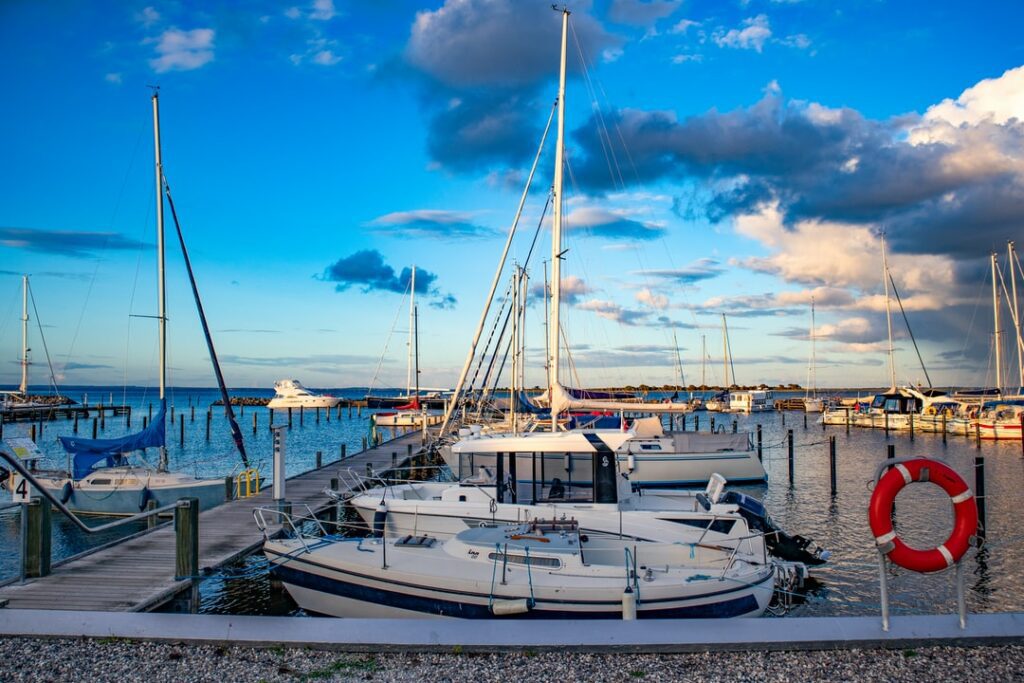
In this article, we’ll look at what a marine forecast is and how early humans interpreted the seas. We’ll also learn how captains and expert boaters interpret forecasts and how international agencies issue marine warnings.
The weather has a powerful impact on both pleasure boating and worldwide ocean shipping so keep reading to learn more.
The Origins of Marine Weather Forecasting
When we think about early humans and sailing, we mostly wonder how they navigated their vessels without the aid of maps. But one critical aspect of sailing is the weather. Since ancient sailors couldn’t yet predict the weather or understand the science behind it, how were they able to sail successfully?
The answer is they weren’t often successful at all.
But early humans, especially those that relied heavily on sailing like the Polynesians, took their weather clues from the world around them. What we might call lore today was, in fact, reasonably accurate science given the tools these ancient mariners had at their disposal.
Observing Animal Behavior
Before dropping a boat in the water, ancient sailors observed animals on land. Hunter-gatherers had extensive knowledge about the animals they hunted and the animals that hunted other animals. Their knowledge about these animals helped them understand more about the world around them.
Ruminants like moose, elk and deer are susceptible to changes in the weather. When humans spotted a herd of these animals lying down, it was a fair assumption that a weather change was on the horizon. Since ruminants lose body heat quickly, they would lie down to warm themselves with the latent heat from the ground.
When elk and deer moved to lower elevations, it was also a sign that a cold front might be moving in.
Equids like horses and donkeys behave similarly to ruminants. When severe weather was approaching, these animals sought shelter under trees or in valleys. They would also group together to preserve body heat and protect younger herd members from wind and rain.
Observing birds was a vital measure of approaching weather. While early humans didn’t know this, birds hear sounds on a different frequency. Birds can pick up on weather sounds from miles away, and observing seagulls flying inland meant a storm was rapidly approaching from the sea.
Sharks are also very sensitive to weather changes. Modern studies show that sharks move to deeper water when hurricanes are approaching. Early humans may have noticed this behavior and, over time, learned to prepare for a severe storm.
Dolphins and whales may also offer clues to approaching weather. Rough seas make it difficult for cetaceans to breathe. When dolphins and whales seek out calm, protected waters, it may be a sign that bad weather is looming.
One of the common denominators here is barometric pressure. Animals are much more sensitive to changes in air pressure, which prompts their behavior during severe weather. Humans didn’t have the tools to measure pressure but watching animals gave them clues to weather changes.
Look to the Skies
While watching animal behavior was an important aspect of weather prediction, the best clues came from the skies. Cloud patterns and formations were impressive indicators of weather. By watching clouds, humans could determine the type of approaching storm, when it might arrive and how severe it might be.
The color of the clouds was a significant factor in determining the storms they might bring. Black clouds indicated lower wind speeds, while brown clouds contained high levels of dust and indicated higher wind speeds.
The height of the clouds also held clues about the weather. Low clouds often indicated rain, as the moisture added weight to clouds and prevented them from rising. Higher clouds often accompanied high winds.
One of the drawbacks of cloud observation is the human eye’s lack of sight distance. In many cases, the observable clouds were too close for people to assess the weather and then plan to avoid it.
Watch the Ocean’s Activity
Even the untrained human eye can observe the height difference in various waves. But the true nature of wave action is much more nuanced. Knowing the difference between waves and swells is an important factor in predicting the weather.
Swells are large movements in the ocean generated by storms that could be hundreds of miles away. When sailors observed large swells, they would then use what they knew about wind direction and the appearance of clouds to gauge the likelihood of a storm.
The wind speed and direction behind the swells also cause changes to the ocean’s surface. When a swell’s top has a round appearance, the wind driving it travels from farther away. A sharp peak on a swell indicates the winds are more localized.
Currents can be hard to observe from the shore, but sailors would often launch their watercraft and sail a short distance from the coast. This allowed them the opportunity to observe the currents and add that information to what they already knew about imminent weather.
The Early Science of Weather Forecasting
People from all cultures had their own versions of predicting the weather. But it wasn’t until the masters like Copernicus and Galileo delved into the science of astronomy that people began to have a better idea of atmospheric science.
But neither of these scientists could accurately predict the weather, and, if they could, they could not convey that information to others in a reasonable time.
The First Marine Weather Forecasts
Unsurprisingly, the men who developed weather forecasting science were sailors themselves. Francis Beaufort and Robert FitzRoy, both members of the British Royal Navy, took it upon themselves to study weather patterns and use their knowledge to create early forms of weather predictions.
Francis Beaufort focused on wind and tides. He kept his own records and encouraged sailors at the British Coast Guard’s more than 200 stations to keep their own tide records as well. Beaufort’s wind studies would become the Beaufort wind force scale, which is a method still used today.
Beaufort’s tide tables were instrumental in giving sailors insight into the ocean’s movement, allowing sailors to plot their courses with more success.
Robert FitzRoy asked ship captains to collect rudimentary weather data from all their voyages which he later collated into semi-reliable weather forecasts. But the main problem still remained: how could this new information be relayed fast enough to allow the ship’s captains the ability to avoid bad weather?
The Electric Telegraph
When Samuel Morse invented the telegraph in 1843, he likely had little knowledge of its impact on weather forecasting. The use of the telegraph was reliant on the use of cables, so its progress was slow.
But by the 1850s, engineers laid a telegraph cable between New York City and London, and operators could relay weather information in minutes rather than weeks or months. Robert FitzRoy used the telegraph to his advantage and set up weather monitoring stations in key locations.
Now that information from those stations was more readily accessible, FitzRoy was ready to consolidate his information and create a weather system analysis everyone could understand.
The International Cloud Atlas
In 1896, the first edition of the International Cloud Atlas was published. This document contained years of data describing the patterns and behaviors of cloud formations. Several scientists contributed to this project under the assumption that cloud patterns were largely similar all over the world.
The science community first published the atlas in English, French, and German. However, the publishers added additional languages as subsequent editions came out with updated information. The atlas became a vital part of seafaring and an integral tool used for assessing sea conditions.
Modern Marine Forecast Techniques
As science and marine travel moved into the 20th century, atmospheric scientists made great strides to improve the way the marine forecast was estimated and delivered. Not only did communication techniques improve, but new ways to observe weather patterns also allowed people to better understand major storm systems and their behavior.
Weather Science Takes to the Skies
As early as the 18th century, scientists used kites and balloons to study upper air patterns. While this method was ineffective at precise weather calculations, it did set the foundation for further aerial research.
By the 20th century, scientists began attaching meteorographs to kites and balloons. These instruments measure wind speed, barometric pressure, and humidity. Some of these balloons could reach the stratosphere, but the scientists couldn’t collect the data until the balloons burst and fell to the ground.
Unfortunately, the data was lost if the scientists couldn’t locate the fallen meteorograph.
By the 1930s, airplanes were deployed with meteorographs on board, but many of the same problems occurred. The data could not be retrieved until the plane landed, and the planes weren’t capable of flying in severe weather, which is precisely the information weather scientists were looking for.
In the years leading up to World War ll, weather prediction became even more important. Naval ships and cargo vessels needed accurate weather information more than ever. Radio transmitters called radiosondes were deployed and could relay real-time data, allowing forecasters to deliver more accurate marine weather information.
The National Oceanic and Atmospheric Association
In 1807 President Thomas Jefferson established the US Coast and Geodetic Survey as a way to provide sailors with nautical charts of the US ports and coastline. The US Weather Bureau came into existence in 1870. These combined agencies were the first governmental scientific agencies in history.
Working together, these groups provided mariners with weather forecasts to the extent that current science would allow. In 1970, the National Oceanic and Atmospheric Association was formed. The National Weather Service , having gone through several name changes, was also established in 1970.
Both entities helped pioneer the use of weather satellites and radar to provide accurate weather forecasts to people on land and at sea.
Nautical Weather Terms
Communication between NOAA and other marine monitoring agencies is done with specific nautical terminology . Without knowledge of these terms, sailors may not understand the potential hazards looming on the horizon.
Nautical Mile
Distance is measured differently in oceans than it is on land. One nautical mile equals 1.15 land miles (also known as statute miles), and one nautical mile equals 1 minute of latitude.
Latitude and Longitude
Latitude and longitude lines are used to precisely map any location on earth. Latitude lines run east to west and are parallel to the equator. Longitude lines run north to south and are parallel to the prime meridian.
When these lines intersect, they form coordinates that link to a specific place on earth. Latitude and longitude are written in degrees, minutes, and seconds. One degree of longitude equals about 70 miles.
In sailing, a knot isn’t just a way to fasten lines. It’s a specific nautical term used as a measurement of wind and ship speed . One knot of wind speed equals one nautical mile per hour, or 1.15 statute miles per hour.
Gust is a measure of intermittent wind speeds. When wind speeds hit 10 knots or more with lulls in between, this is considered a gust.
Sustained Wind Speed
Sustained wind speeds are winds that maintain a steady speed over a period of time. Sustained wind speeds and gusts can happen simultaneously. An example would be sustained winds of 50 knots with gusts of a higher speed.
Doldrums is an antiquated word, but it describes a specific area of the Atlantic Ocean known for its calm waters and minimal winds. Before sailors knew to navigate around the area, they could spend days or longer without wind to power their sails.
Gale Warning
A gale warning indicates sustained winds of 34 to 47 knots. Gale warnings are not issued in hurricane or cyclone conditions.
High Seas Forecast
High seas can occur in any ocean and the Great Lakes and refer to wave height often generated by storms. A high seas warning is issued when waves reach approximately 18 meters high.
A high seas warning is one that sailors should always take seriously. High seas have the potential to sink ships and severely damage offshore oil rigs . Early warning and immediate action are necessary to avoid disaster.
Small Craft Advisories
Any boat less than 66 feet in length is considered a small craft. Sea conditions that won’t affect larger ships will affect small craft vessels. Small craft advisories for wind are issued when wind speeds reach 22 knots or higher.
Small craft advisories for hazardous seas are issued when wave heights reach 10 feet, but wind speeds are less than 22 knots.
Tropical Storm Warning
Tropical storm warnings occur when sustained winds are 34 to 63 knots. Tropical storms often have the potential to reach hurricane status.
Typhoon Warning
Typhoons and hurricanes are similar storms. However, when one of these storms occurs west of the international date line, it’s called a typhoon. When it occurs east of the international date line, it’s called a hurricane.
A typhoon warning is issued when wind speeds are 64 knots or higher, significantly affecting the shipping forecast.
Special Marine Warning
A special marine warning is usually an isolated event that lasts no more than two hours. Typically a special marine warning is issued when sudden winds reach 34 knots or waterspouts have been observed.
A fathom is a measure of depth in the ocean. A fathom may sound like it refers to significant depth, but in reality, a fathom is only six feet. Most ocean depths are named in feet or meters, but you may run into a salty old ship’s captain who prefers to use this term.
Weather Hazards Facing Today’s Ships
Modern sailors have a wealth of weather information at their fingertips. The World Meteorological Organization has been instrumental in gathering weather data and making it available to anyone engaged in water activities.
Primarily using satellite data, nautical buoys, and GPS technology, information regarding all of these weather hazards and warnings is available to sailors and must be monitored at all times.
Wind speeds and direction are among the top pieces of information a sailor should know. The force of the wind and the direction it’s coming from can mean that a captain has to alter the course or stay at the port until the wind conditions are more favorable.
Wind speeds are even more impactful for smaller vessels. Small craft advisories and warnings are issued when wind speeds are particularly threatening to sailboats and pleasure craft.
Waves
Waves and large swells can be disastrous for watercraft of all sizes. Large waves prevent bigger ships from making headway and burning precious fuel in the process. And while the hull construction of large ships allows them to handle large waves, the safety of the crew and the cargo may be at risk.
Smaller watercraft can easily be inundated by small waves, making it critical that pilots of small watercraft heed all marine warnings at all times.
Port officials also need to pay attention to wave warnings. Large wave action prevents the safe offloading of cargo and can cause damage to both the ship and the dock. During significant swells, many vessels are required to anchor offshore until the wave height diminishes.
Even though modern ships have state-of-the-art marine radar systems , visibility is paramount to ocean safety. Fog, sea smoke , mist, low cloud cover and heavy rains all impact visibility.
When visibility is less than two nautical miles, the captain must choose to proceed with caution. When visibility drops to less than one nautical mile, the captain must slow the forward motion , or the vessel needs to come to a complete stop. Ignoring low visibility warnings can lead to catastrophic collisions.
Docking in low visibility is also hazardous. The port master may choose to suspend port activity until the visibility improves.
Squalls and Thunderstorms
Significant rain events like squalls and thunderstorms happen in waters all over the world. Even though these storms are commonplace, they can potentially create serious hazards for ships and crew.
Cruise ships and cargo vessels are especially vulnerable to the effects of a thunderstorm. The length and height of these ships put them at risk of heeling over.
While rainfall makes deck conditions hazardous, it’s the associated wind and wave action that make thunderstorms at sea dangerous. Lightning is also a grave concern.
Since a ship’s masts are high enough to attract lightning, crew members must stay off the deck and out of the water during a thunderstorm.
The Ocean’s Currents
One of the key aspects of marine navigation is the ocean’s currents. Currents determine how a captain plots a course, manages fuel consumption, and alerts the crew to potential hazards, like icebergs, that may be driven by the currents.
Currents can also have an impact on storm development.
Hurricanes and Tropical Cyclones
Prior to modern weather forecasting, hurricanes and tropical cyclones were deadly hazards for seafarers. With today’s advanced warning systems, most vessels can avoid a direct hit by a hurricane. However, since hurricanes can span hundreds of miles of the ocean, avoiding the storm’s outer bands is not always possible.
When a hurricane warning is issued, it’s charted in latitude and longitude. Less experienced captains and crew may not be familiar with these positions, putting themselves, their crew, and their boat in danger.
Stay Safe by Understanding Marine Weather Forecasts
Whether you’re a pleasure boater or the captain of a Capesize or Panamax cargo ship , the marine forecast is crucial to keeping your crew and your cargo safe from harm. Taking classes is a great way to learn the terminology and nuances of marine weather and how to navigate safely in stormy seas.
Are you interested in learning more about life and work on the high seas? Have a look at some of our other articles to boost your knowledge and hone your safety skills.

- Recent Posts
- Responsibilities of a Fourth Engineer on Cargo Ships – September 10, 2024
- The Role of Cargo Ships in Global Trade – August 22, 2024
- Report: Yang Ming’s YM Mobility Explosion at Ningbo-Zhoushan Port – August 9, 2024
About the author
I worked as an officer in the deck department on various types of vessels, including oil and chemical tankers, LPG carriers, and even reefer and TSHD in the early years. Currently employed as Marine Surveyor carrying cargo, draft, bunker, and warranty survey.
Latest posts

Is Maritime Security Necessary on Modern Ships?
It’s vital for ships to stay vigilant. Isolation from land means having no backup or protection for miles, making them vulnerable to attacks and other threats. Equip modern ships using modern maritime security methods.
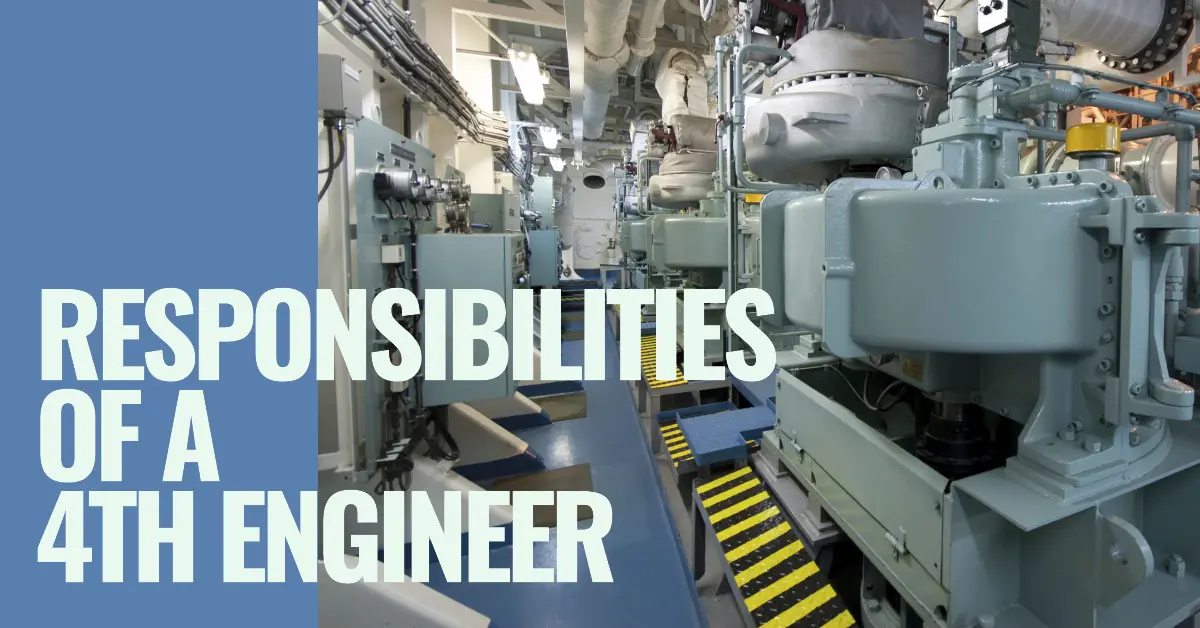
Responsibilities of a Fourth Engineer on Cargo Ships
A Fourth Engineer on cargo ships oversees engine room operations, machinery maintenance, and ensures compliance with regulations like MARPOL.

The Quality Control Process in Marine Manufacturing
Companies in the marine manufacturing space must have tight and effective quality control processes. What steps should an effective quality control process include?
- Our offices
- Meet the team
- Our core values
- Our partners
- Marine travel
- Yacht travel
- Refit & Repair
- Offshore travel
- Corporate travel
- Our customers
- Sponsorship

Marine fares are used by many maritime companies and individuals working in the marine sector worldwide. The one way flexible and refundable fares are offered to crew joining/leaving vessels and rigs.
Read on to find out the most frequently asked questions about marine and offshore fares
Am I eligible to travel on a marine/offshore fare? We cover a cross section of marine related business including ship’s crew, offshore, yacht crew, engineers and surveyors throughout the UK and Worldwide. Therefore, anyone who is travelling to work onboard a vessel/rig whether its at sea or in dry dock will be able to use benefits of travelling on a marine fare ticket. Further details regarding eligibility can be found here
We have direct access to over 140 marine and 70 offshore airline contracts which we have negotiated for our sole use. Our experienced reservation team will provide a selection of flight quotations in order for you to pick which one suits your arrangement the best. We are open 24/7.
How do airlines know who’s eligible to travel on a marine/offshore fare? Our reservations team will need to know the name of the vessel/rig that you are working on for a marine fare to be quoted. This information is added to the booking. We always recommend that you travel with a letter on company headed paper, stating that you are employed to work onboard. We offer a free service of creating your own bespoke company letter, please ask for more details.
Airline staff may ask for proof of entitlement to travel on a marine fare and this letter can be used as evidence. If you are unable to produce it, on request, your airline may deny you boarding or ask you to purchase a new ticket.
Can I hold the flight and issue later when my dates are fixed? Yes. We can hold your seats on flights for a limited time depending on the airline. Fares are subject to change until the moment they are purchased and will expire at the end of each day meaning the exchange rate differences can see fares rise or fall each day. We will endeavour to let you know if it looks like your seats are about to expire.
Can I book a flight departing the same day? Yes, we understand that as the maritime sector is notorious for last minute bookings and changes, we can appreciate that the majority of flight requests will be travelling imminently. Therefore, our team are on hand 24/7/365.
Can I change my flight? Yes. If you are booked on a marine fare, then changes are permitted on 99% of flights. Changes are often permitted without charge but there may always be a fare difference between the old and new tickets. Some carriers impose change fees even on marine fares, but we will advise this on any email correspondence detailing flight itineraries so do check and ask if you’re not sure.
If you are booked on a standard ticket/published fare, then the majority will have a change fee should you wish to amend. Again, though you will be advised of this before booking.
Can I cancel my flight? Yes. If you are booked on a marine fare, then the majority of airlines allow cancellations to be made with little to no penalty. Some airlines also allow cancellations to be made on marine tickets after departure of the flight, whilst some will advise that no show = no refund. If in doubt, ask us when you book.
If you are on a standard ticket/published fare, then most of these are non-refundable or charge a variety of fees to refund your ticket.
Can I travel in premium cabins? Many of our airline partners have marine fares for Premium economy and Business class cabins, just let us know when you’re booking that you’d like to explore those options and we’ll tailor it accordingly.
What’s my baggage allowance? Most marine fares allow an upgraded baggage allowance. In economy this can be 40Kg or 2 x 23KG depending on the airline remember though, no one bag can weigh more than 32Kg.
Standard airline tickets/published fares normally limit you to one bag of 23Kg. Premium and Business class will usually allow for 3 bags. As always, your flight information should have the allowance noted, any questions, just let us know.
Can you help, its 2am and I urgently need to change my flight? We offer a continuous service, open 24/7/365 . Our own reservation staff are available to make a new booking or change an existing reservation and can reach on [email protected]
I won’t be working on a vessel this time, can I still have a quote? Yes. We have access to specially negotiated published fare just for the purpose of non-marine travel. So, if you are going to a meeting or even an exhibition we can still offer you a great fare.
This fare type may involve restrictions and a lower baggage allowance than a marine fare but this will be explained to you at the time the quote is provided.
Are you able to assist with a hotel reservation? Yes, we can. In fact, we can book transfers, lounge pass, rail, low-cost airlines and car hire for UK and Worldwide destinations.
How can I pay you? There are several ways to pay. We can accept payment by credit card and will send a secure link via email for you to complete. We are a PCI compliant company and do not store any payment details. Therefore, you will receive a new link each time you make a booking with us. Payment can also be sent via BACS but please allow time extra time and any currency fluctuations must be taken into consideration. We also offer the option of opening a credit account. Please contact us for more details.
What else do I need? Please be aware you are responsible for your own visas to travel to/from/through any countries on your itinerary. Marine Travel cannot be held responsible for any missed flights or cancellations through lack of correct and valid travel documentation. If required, we can put you in contact with a visa specialist.
Most airlines require passport details before any tickets can be issued. Unless otherwise requested, we will store this information on our system solely for the purpose of arranging travel. To read our Privacy Policy click here
More and more airlines are now requiring contact details for the passenger. If requested, we will need an email or a phone number to add to your booking.
How do I get in touch? Our offices are manned 24/7/365, you can reach us via email at [email protected] or call us on +44(0)1227 470720, via Livechat or by completing the request a quote form

Maritime Terms, Abbreviations and Acronyms
Maritime abbreviations and acronyms go back to those days we used telegram and telex to communicate. The business model for telex and telegrams was “pay per letter”. Even though the telegrams and telexes have been retired, we still use the maritime abbreviations daily. Below you will find a comprehensive list of terms, abbreviations, and acronyms used in the maritime industry, sorted in alphabetical order. You can search for an acronym or write a word and find the abbreviations where the word is included. If you think some abbreviations are missing, send us an e-mail at [email protected] or open the chat icon on the bottom of this page.
A Square Meal
Above board, absolute viscosity, accelerated corrosion test, accessorial charges, accommodation ladder, accommodation platform, jack up, accommodation platform, semi submersible, accommodation ship, accommodation vessel, stationary, accomplished bill of lading, acetaldehyde, acetic acid, acetic anhydride, acid pre-treatment, acidulate soapstock (acid oil), acquiescence, acquittance, acrylate elastomer, acrylic acid, acrylic esters, acrylic fibers, acrylonitrile, activation potential, active state, actual condition, actual specifications, acute (aquatic) toxicity, acute effects of overexposure, acute toxicity, adcom or addcomm.

Information
Helpful links.
Marine & Offshore Travel
Need to reach a remote ocean location? Let us get your crew where they need to go.

No more feeling lost at sea
With decades of marine and offshore travel experience, our specialists know the ins and outs of how your industry works and what you need to make it to your destination seamlessly.
We’re here to accommodate your every travel requirement, ensuring you have the support you need 24/7/365.

Fares that will keep you afloat
Is your business in the oil and gas industry? It’s time to save big on offshore fares.
Our relationships with travel industry partners mean that we can secure you and your crew competitive offshore fares across the board. We love negotiating special marine fares. Let us bring down your spend and boost your travel experience.

Songa Offshore Case study | Marine & Offshore
Take your travel program to the next level. chat with our experts..
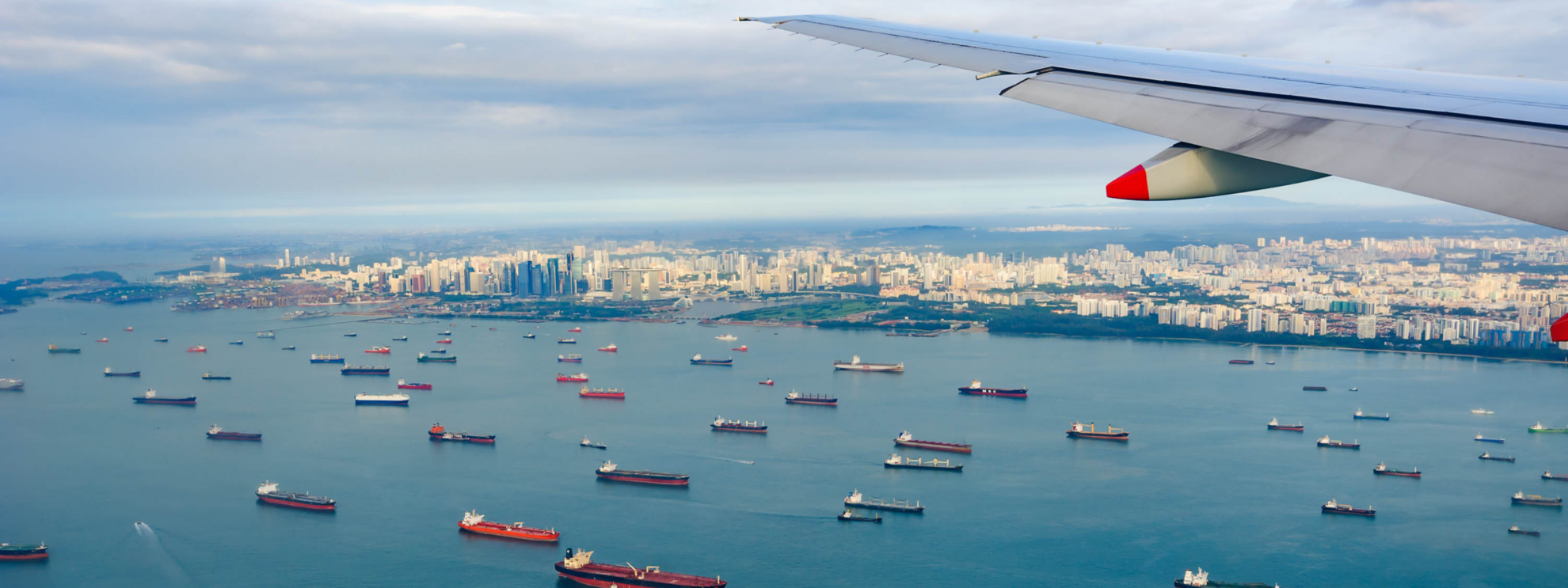
Your partner in marine travel
Elevate your crew travel management experience with our tailored solutions seamlessly managed by experts, powered by technology, and designed for success.
Home > Marine travel
Our expertise
100 years afloat.
Trusted maritime travel expertise perfected over a century – count on our time-tested solutions to navigate your journeys flawlessly.
Crew efficiency masters
Sail smoothly with efficient crew management solutions – optimising schedules and logistics to keep your workforce shipshape.
Crew change logistics
A unique collection of proactive solutions built on digital applications, communications infrastructure and expert-led services that streamline workflow-specific functions within crew travel management.
Innovative technology solutions
Embrace the future of maritime travel with our cutting-edge sector-specific tech and products – stay ahead of the industry’s tide.
Caring is our culture
Your crew’s wellbeing is our concern – prioritise duty of care with thoughtful support for safe and contented travels.
Navigating cost efficiency
Plot your course to savings using powerful analytics tools and global marine fares – unlocking the most economical routes for your voyages.
Committed to seamless crew travel management
24/7 support.
Sail confidently, knowing that ATPI is standing by, ready to assist, anytime, anywhere.
Navigating travel complexities is our expertise, and we’re always here to provide unwavering assistance whenever you need it. With a dedicated team of experts, we handle any challenge, from changing itineraries to emergency situations, so your crew reaches their destinations without delay.
No matter where or when, our global network guarantees access to support and solutions that fit your unique requirements. Trust us as your reliable partner in maritime travel, ensuring efficiency, safety, and peace of mind on every trip.
Safe travellers
Reassurance that every crew rotation is safe and compliant.
Safety and security challenges begin as soon as crew leave their front doors. ATPI takes a comprehensive approach to ensure your shipping organisation’s duty of care responsibilities are fulfilled.
With extensive risk management strategies and 24/7 emergency support, we provide a safety net that empowers your crew to focus on their mission. Our range of tools, technology and services, packaged with consultancy from marine travel experts, keep your travellers safe and your organisation compliant.
Sector expertise
Navigating marine travel with expert solutions for your industry.
With over 100 years of specialised experience, we understand the unique challenges and requirements of marine travel. By working with ship owners, ship management companies and crewing agents for the last century, we’ve seen every changing tide and bring all this experience to your organisation’s travel management strategy.
As an authoritative voice within the marine sector, working with organisations such as the International Maritime Organisation, ATPI provide each of our shipping clients with unique insight and best practices to ensure that they’re maintaining the very best travel strategy.
Specialist services
Ensuring the industry’s complexity is dealt with precision.
Embark on a journey of exceptional services tailored to maritime needs. Our specialist solutions go beyond borders, ensuring every trip is smooth sailing for crew, providing piece of mind. Seamlessly navigate crew rotations and international travel logistics with our expertise.
We handle the complexities; you can focus on your duties. Trust our global network to handle last-minute changes and unexpected challenges. We’re your passport to success in marine travel, making every crew change seem like a breeze, no matter the destination.
Reduced costs
Unlocking economical marine travel.
We analyse your marine travel data using powerful analytics tools to identify savings opportunities, streamlining expenses without compromising on quality. Our global marine fares ensure you get the best value for every voyage, reducing costs without sacrificing service.
With deep insights into the industry’s dynamics, we optimise itineraries, reducing travel expenses while maintaining crew satisfaction. Benefit from our vast network of partners and negotiated fares, sailing with confidence that you’re getting the most economical routes available.
Crew travel is evolving… Don’t get left behind.
A unique collection of pro-active solutions built on digital applications, communications infrastructure and expert-led services that streamline workflow specific functions within crew travel management.
Discover more
Trusted by…

Cruise logistics
Smooth voyage, exceptional experience. Our travel management solutions are tailor-made for cruise companies, optimising crew travel, and ensuring seamless operations at sea.
- Streamlined crew rotations
- Port-to-port expertise
- Cost optimisation
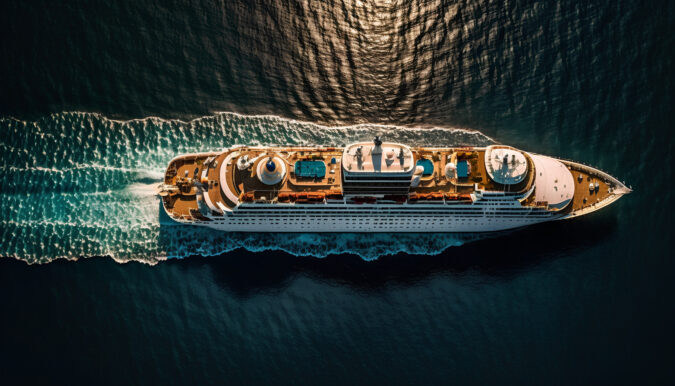
Global maritime organisations rely on us
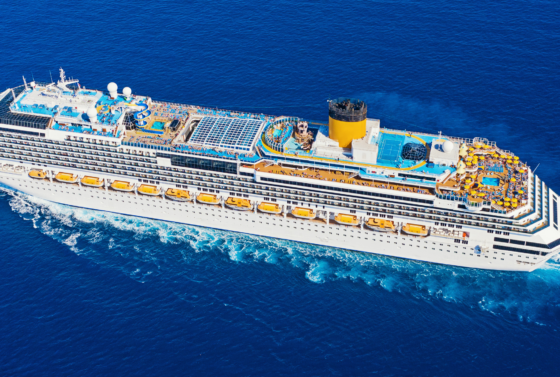
Cutting the cost of cruise ship crew changes
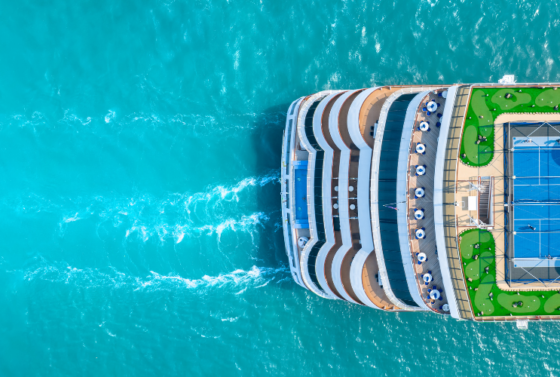
Delivering stress-free crew travel solutions for a leading ocean cruise company
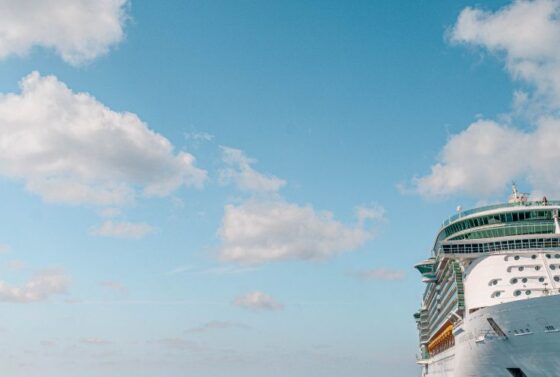
ATPI’s seamless crew travel solution for Wilhelmsen Port Services Hellas

Supporting duty of care: ATPI’s collaboration with International SOS

Repatriating an unwell crew member in challenging circumstances

Delivering a cost-effective charter to ensure the wellbeing of crew during the pandemic
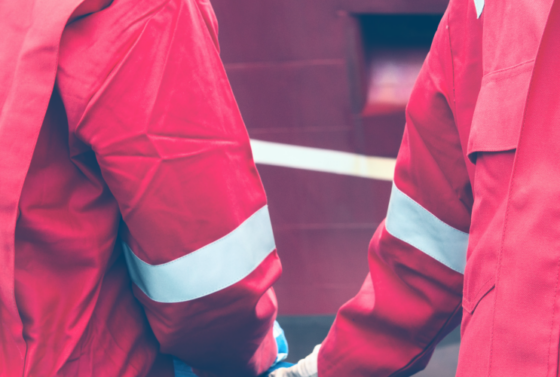
Developing a travel savings programme with OSM Maritime
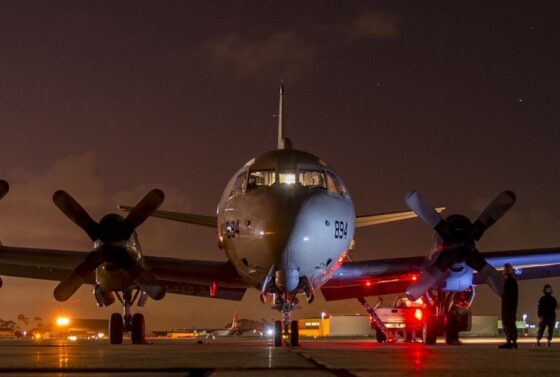
An unexpected travel crisis and its impact on the Philippine maritime industry…
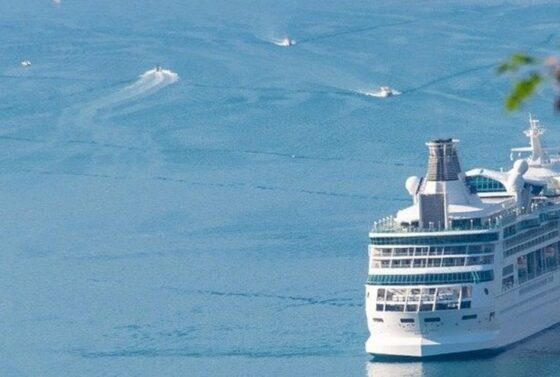
Strategic partnership achieves cost savings with Sea Chefs
Streamlined crew management solutions.
Elevate your travel experience with ATPI’s cutting-edge technology:
- User-friendly platform
- Effortless workflow management
- Complete journey control
- Sector-specific technology

Sign up to our newsletter to receive the latest updates straight to your inbox

Marine travel insights
We’ve gathered the most up-to-date articles for you.
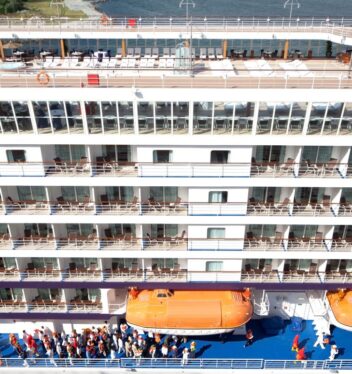
From Deck to Dining: The vital role of crew in the cruise experience

Crisis averted: ATPI’s hybrid approach to the Global IT disruption

Success at the Sales Excellence Awards 2024 for ATPI Greece

Yacht crew change travel booking: One size does not fit all
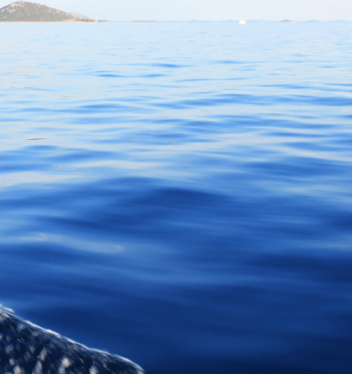
Discovering new European summer routes for yachting season
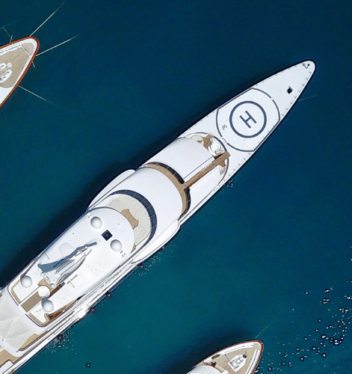
Navigating the Schengen Area with ATPI Yacht Travel
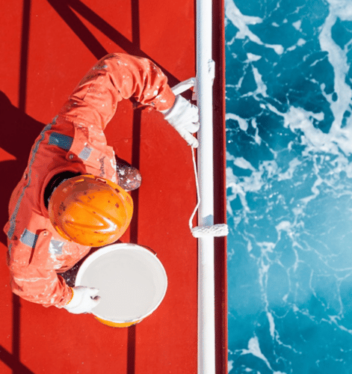
ATPI Marine Travel unveils new holistic Crew Change Logistics solution
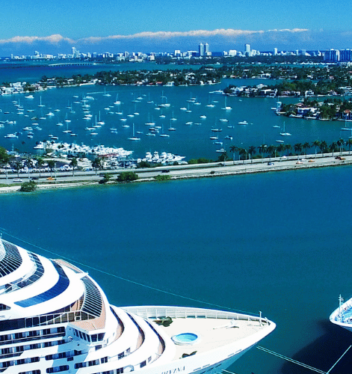
Meet ATPI Marine Travel in Miami
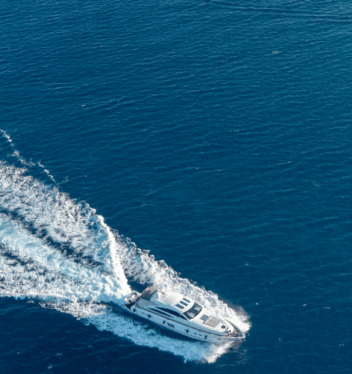
Navigating towards sustainability: The yachting industry’s commitment to environmental responsibility
Want to find out more.
Let our marine travel experts take care of you.

IMAGES
VIDEO
COMMENTS
Maritime transport (or ocean transport) or more generally waterborne transport, is the transport of people or goods via waterways. Freight transport by sea has been widely used throughout recorded history.The advent of aviation has diminished the importance of sea travel for passengers, though it is still popular for short trips and pleasure cruises.
1. Cost-effective: One of the significant advantages of maritime transport is its cost-effectiveness. Compared to other modes of transportation, such as air or road, shipping goods by sea is generally more affordable. The ability to accommodate large cargo volumes and the lower fuel consumption of ships contribute to lower transportation costs.
Underwater tourism is opening the ocean up to travellers, offering them the chance to see the marine world that covers 70% of our planet. New, high-profile openings - such as the world's first ...
Shipbuilding techniques and navigation methods evolved over time, leading to advancements in sea transportation. The invention of the steam engine in the 18th century revolutionized maritime travel, making it faster and more reliable. The introduction of iron and steel ships in the 19th century further improved durability and capacity.
Marine tourism includes those recreational activities which involve travel away from one's place of residence and which have as their host or focus the marine environment. Such environments include waters that are both saline and tide affected (Orams 1999). The use of the sea for recreation and tourism has grown extensively over the latter ...
U.S. DEPARTMENT OF TRANSPORTATION. Maritime Administration. 1200 NEW JERSEY AVENUE, SE. WASHINGTON, DC 20590
The League, an age-old nautical unit, is generally taken to mean three nautical miles, or roughly 3.452 miles (5.556 kilometers). The Furlong, another obsolete nautical unit of distance, is equal to one-eighth of a statute mile or roughly 220 yards (201.17 meters). But, for more immediate distances, we have the Cable (cbl), which measures a ...
The meaning of MARITIME is of, relating to, or bordering on the sea. How to use maritime in a sentence. Did you know? ... marine; nautical; navigational; See all Synonyms & Antonyms in Thesaurus . Examples of maritime in a Sentence. The country's maritime industry is an important part of its economy.
Marine tourism is the act of engaging in tourism activities partaken in large bodies of water such as fresh water lakes and oceans. Activities such as diving or snorkeling, visiting coral reefs in a sustainable way, sailing in a wind powered sail boat, or watching the wildlife from a quiet electric boat or even from shore are all marine travel ...
According to Hall (Hall, 2001), coastal and marine tourism - although distinct forms of tourism - are very closely related, due to the water/sea element. Indeed, marine tourism constitutes a form of tourism totally connected to and dependent on the sea and the marine environment (Lekakou and Tzannatos, 2001), although the water element is not ...
Terms related with the ship. ABEAM - At right angles to the navigating bridge of a ship. AFT - Toward the stern of the ship. ABAFT - Between abeam and astern. AHEAD - In a forward direction, ie in the direction of the bow (front) of the ship. ASTERN - In back (stern) of the ship, opposite of ahead. PORT: The left of the ship, facing the bow OR ...
Marine tourism. The sea has always been an important venue for recreation. However, its use for tourism has mirrored the global growth of mass tourism during the latter half of the twentieth century and on into the twenty-first century. According to Orams (1999: 9), marine tourism includes those recreational activities which involve travel away ...
Glossary of Maritime Terms. ABS: The American Bureau of Shipping is a U.S. classification society that certifies if a ship is in compliance with standard rules of construction and maintenance. anchorage: Port charge relating to a vessel moored at approved anchorage site in a harbor. apron: The area immediately in front of or behind a wharf shed on which cargo is lifted.
MarineTraffic Live Ships Map. Discover information and vessel positions for vessels around the world. Search the MarineTraffic ships database of more than 550000 active and decommissioned vessels. Search for popular ships globally. Find locations of ports and ships using the near Real Time ships map. View vessel details and ship photos.
Maritime is used most often in connection with seafaring, with sea travel, shipping, and exploration, and aspects of the sea in relation to those activities; whereas marine relates directly to the sea and its creatures.. Here's an ngram.As you can see from the results, while there is no absolute demarcation (we find marine engines and marine insurance, for example) most uses of marine relate ...
Ch. 8. CHAPTER 5--TRAVEL OF MARINE CORPS PERSONNEL & DEPENDENTS 5152. a. It is the normal practice of the Commandant of the Marine Corps to issue change of station orders when it is expected that an individual will perform duty at one place for a period in excess of 20 weeks.
Offshore. Offshore travel management often comes with unique logistical demands. Our service is specifically designed to assist the offshore ship industry with travel to and from their homes, to vessels and installations worldwide. With Global Marine Travel's wide range of marine and offshore airfares, your crew couldn't be in safer hands.
The OOW Maritime Dictionary is updated at frequent intervals. The best way to find the definition of the term you are searching for is by pressing ctr+f in your web browser to pop up the search bar and type the term you want to find. The majority of the information presented below has been compiled from various sources either from the internet or through personal day to day work experience and ...
As science and marine travel moved into the 20th century, atmospheric scientists made great strides to improve the way the marine forecast was estimated and delivered. ... The force of the wind and the direction it's coming from can mean that a captain has to alter the course or stay at the port until the wind conditions are more favorable ...
Most marine fares allow an upgraded baggage allowance. In economy this can be 40Kg or 2 x 23KG depending on the airline remember though, no one bag can weigh more than 32Kg. Standard airline tickets/published fares normally limit you to one bag of 23Kg. Premium and Business class will usually allow for 3 bags.
A term applied to a portable flight of steps suspended over the side of a vessel from a gangway to a point near the water, providing any easy means of access from a small boat. Accommodation Ladders are usually supplied with two platforms, one at each end. Sometimes called gangway ladder.
No more feeling lost at sea. With decades of marine and offshore travel experience, our specialists know the ins and outs of how your industry works and what you need to make it to your destination seamlessly. We're here to accommodate your every travel requirement, ensuring you have the support you need 24/7/365.
Our travel management solutions are tailor-made for cruise companies, optimising crew travel, and ensuring seamless operations at sea. Delivering stress-free crew travel solutions for a leading ocean cruise company. ATPI's seamless crew travel solution for Wilhelmsen Port Services Hellas. Supporting duty of care: ATPI's collaboration with ...